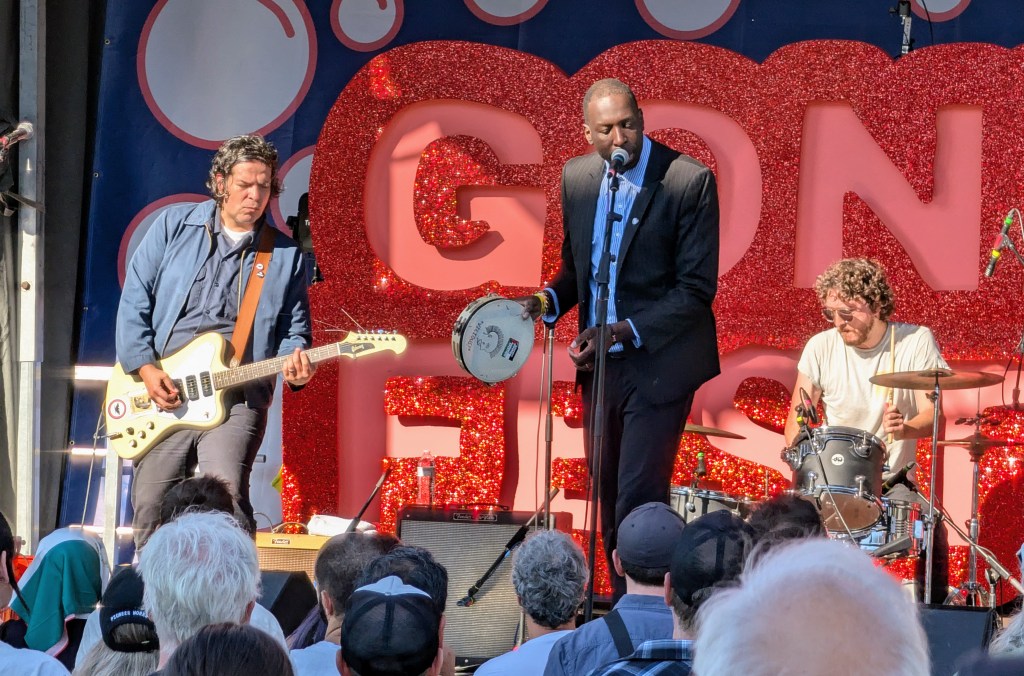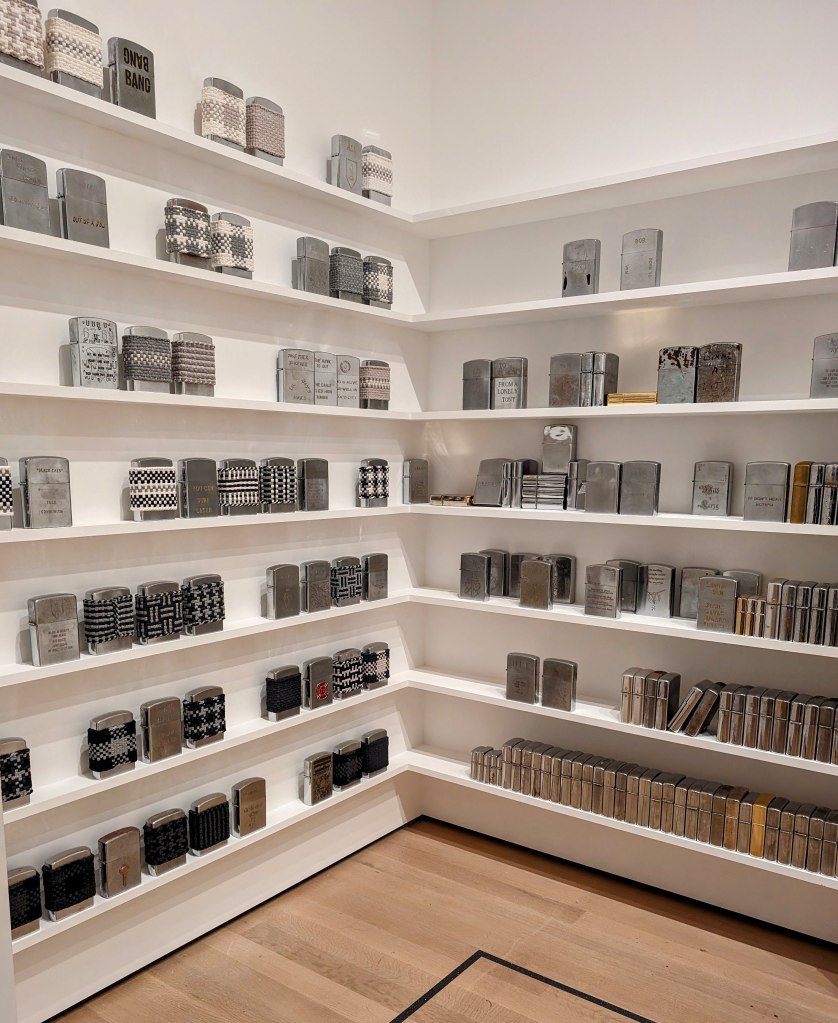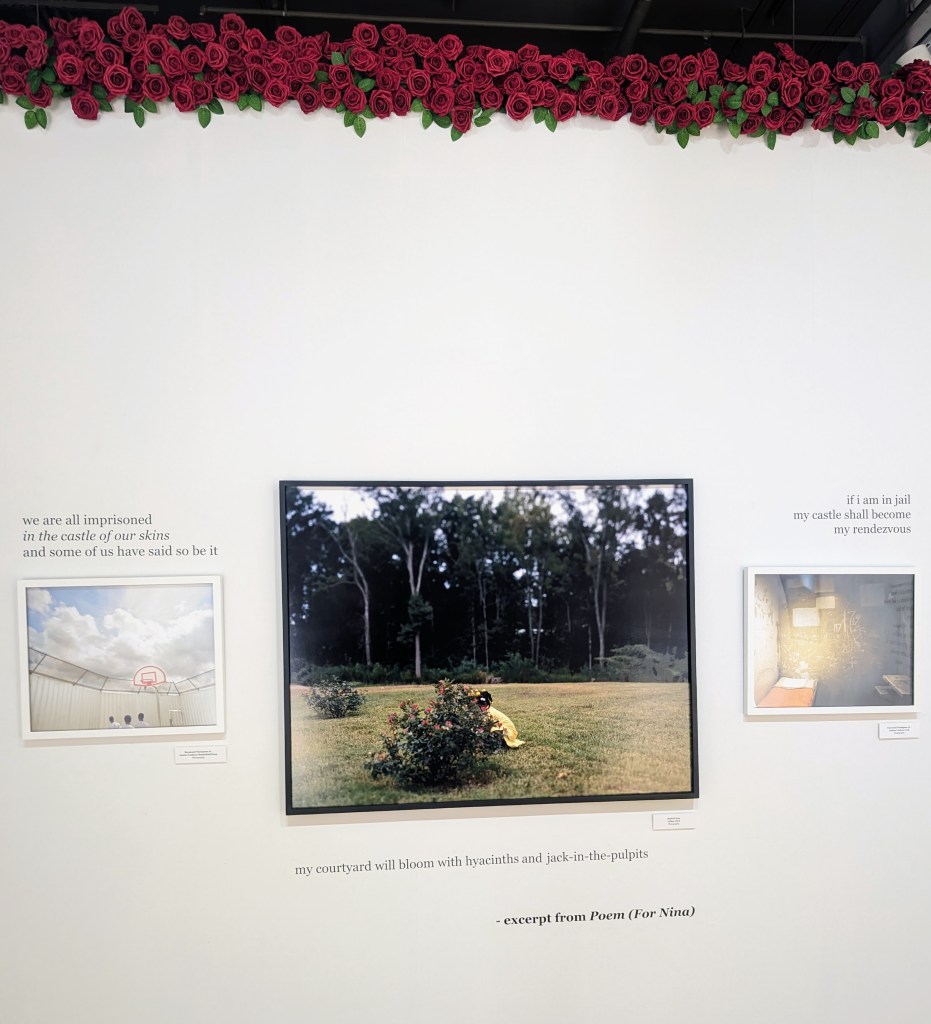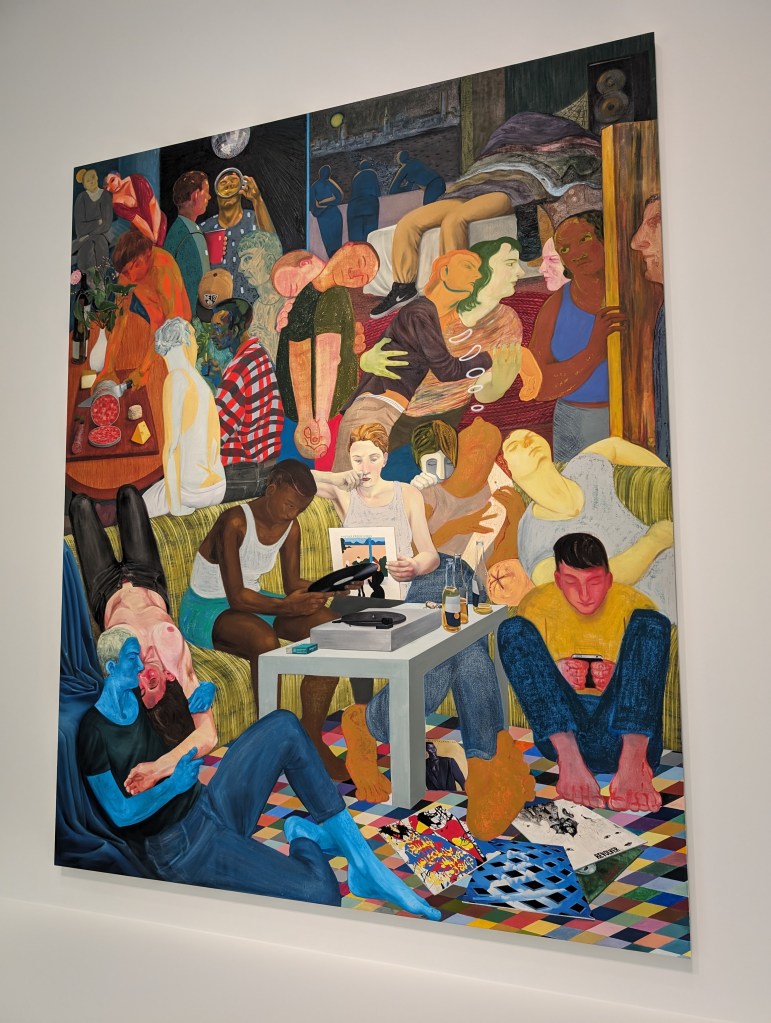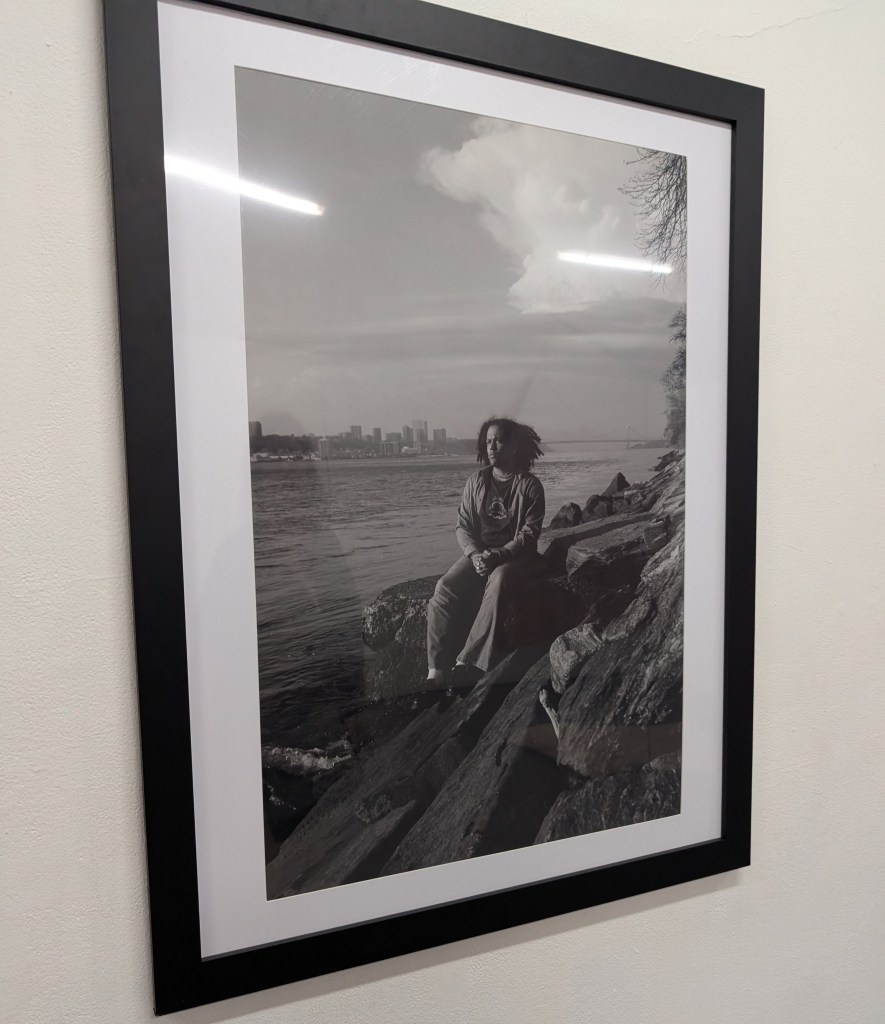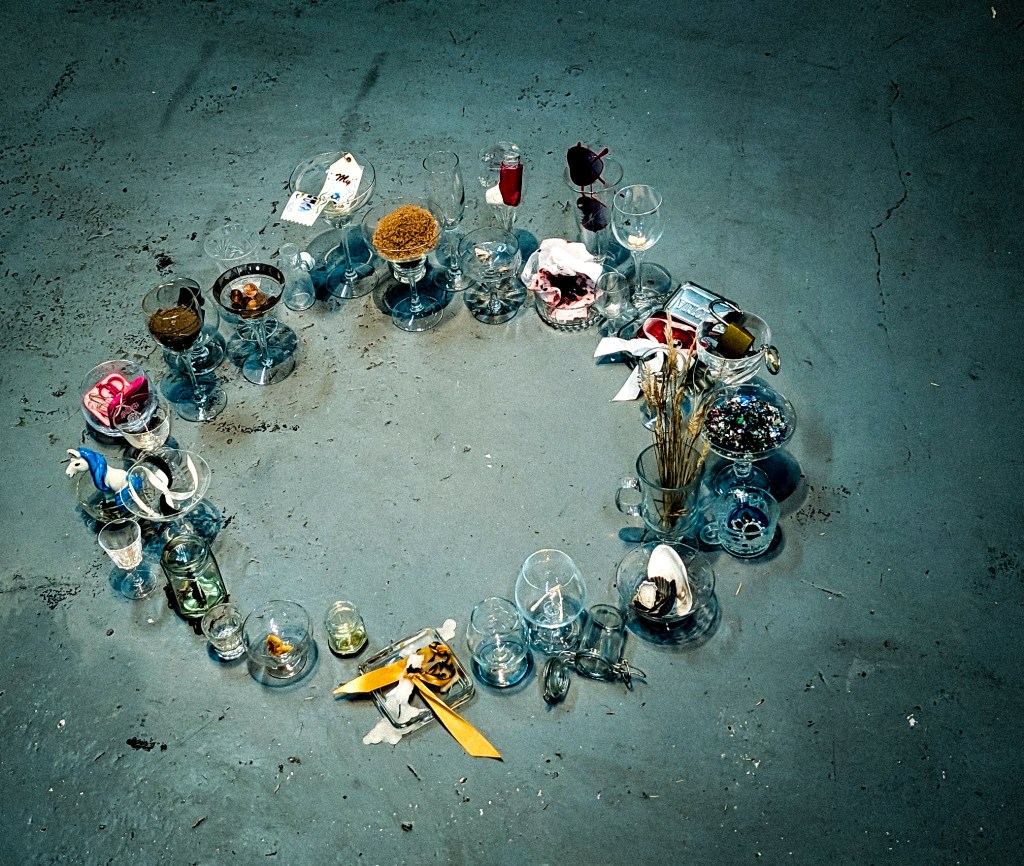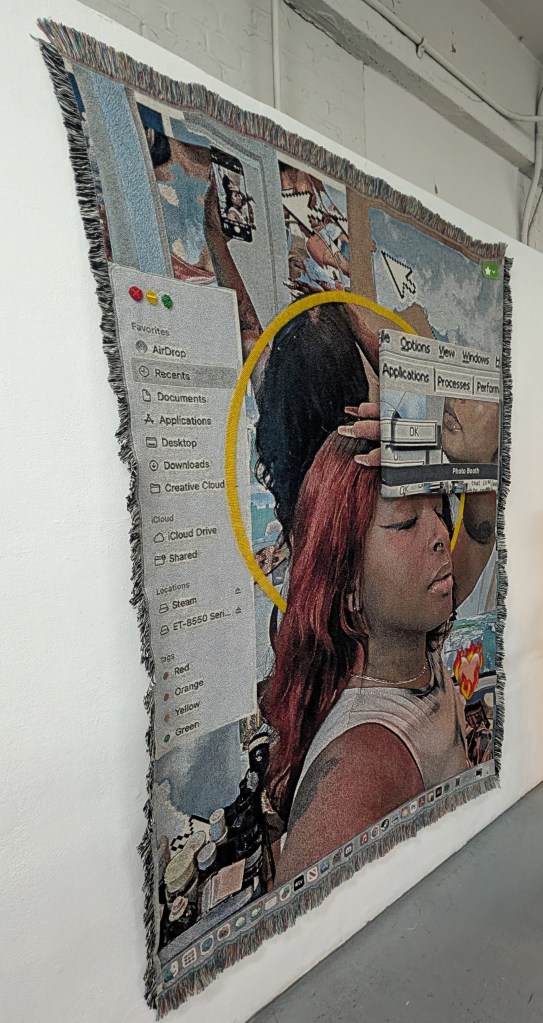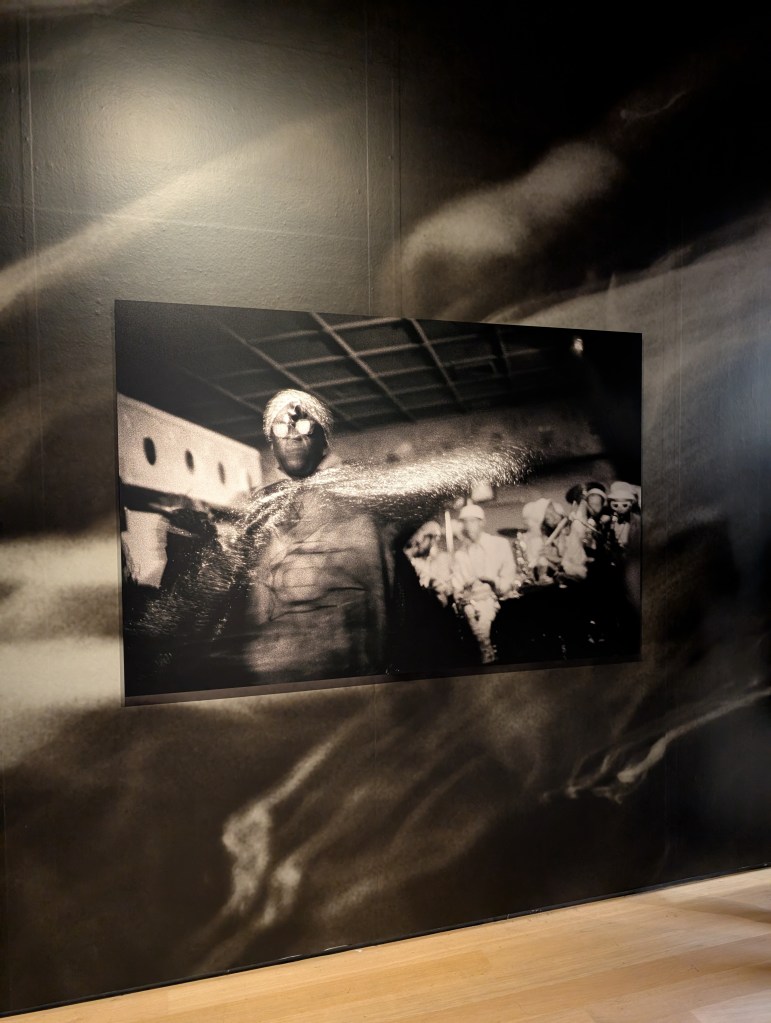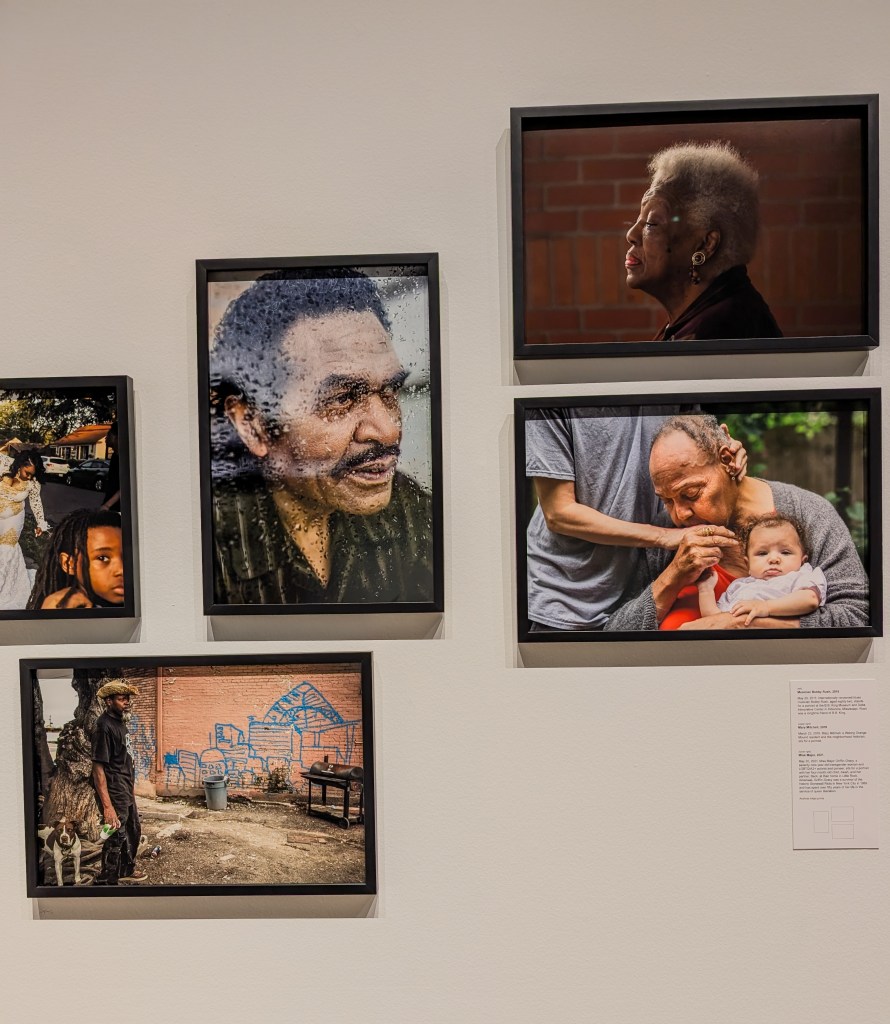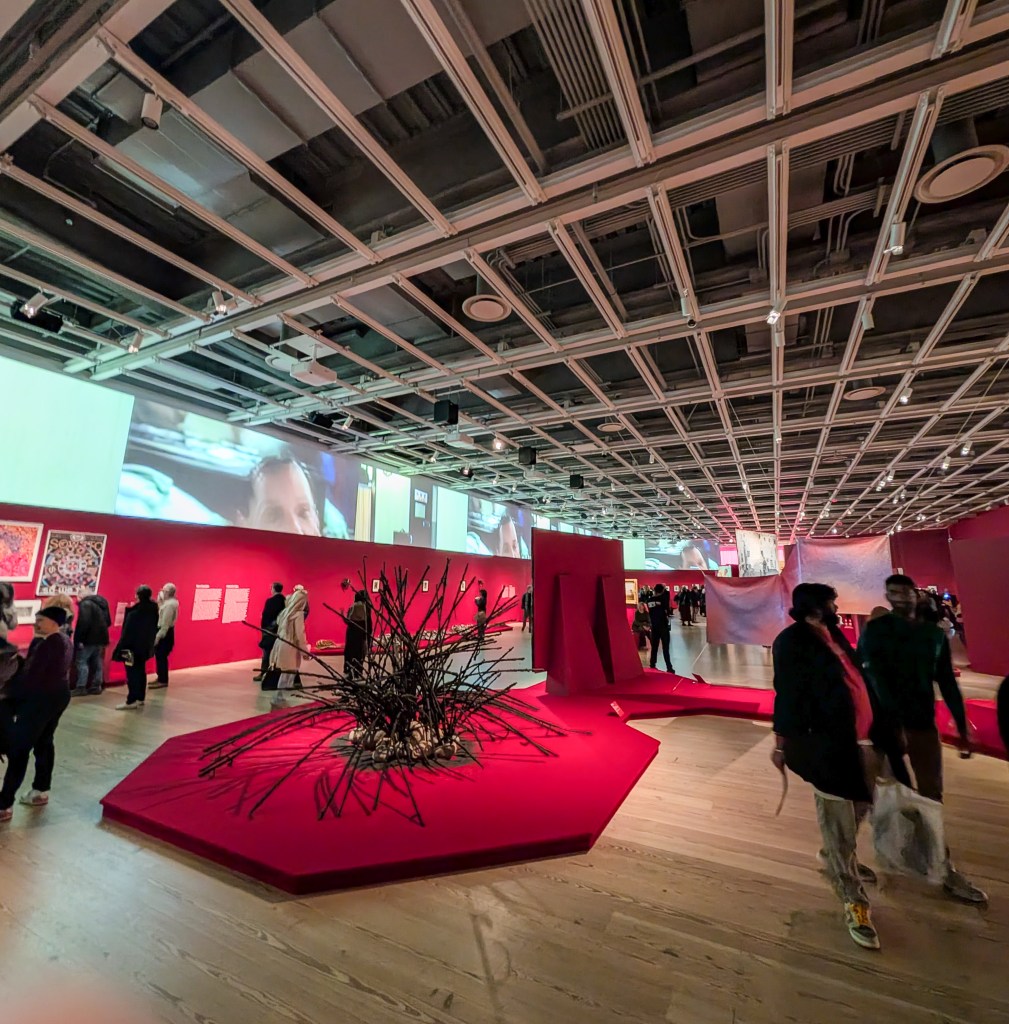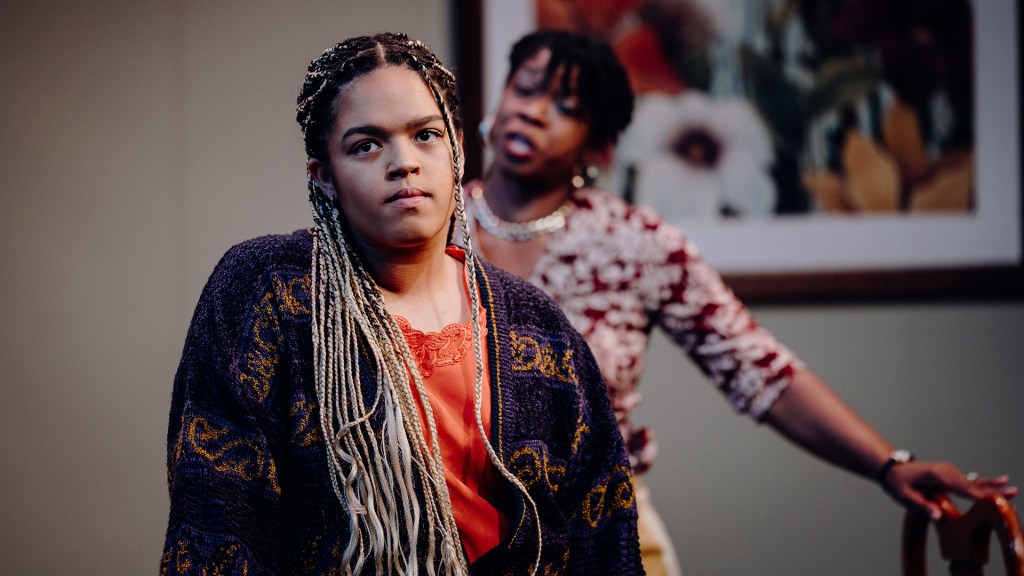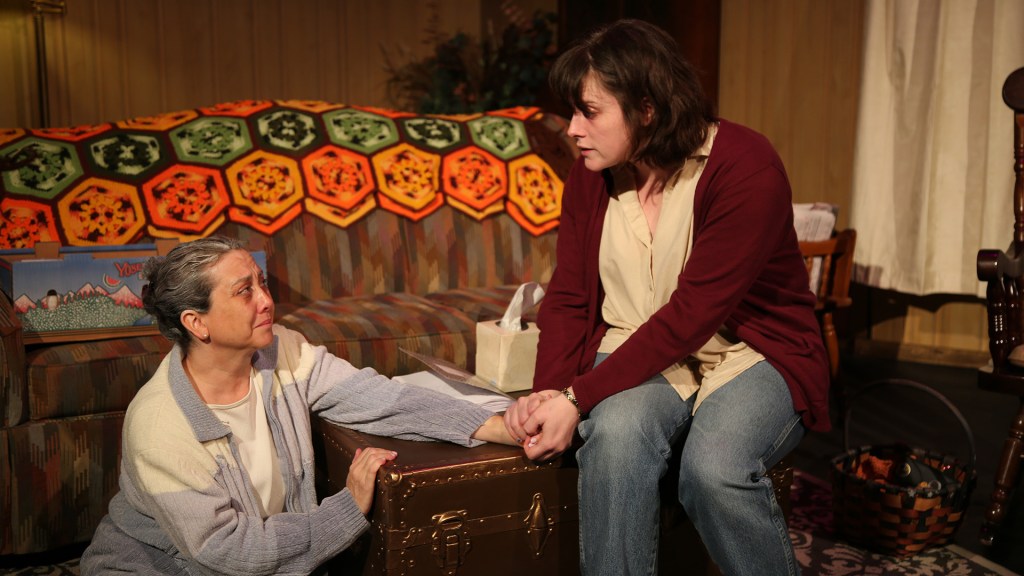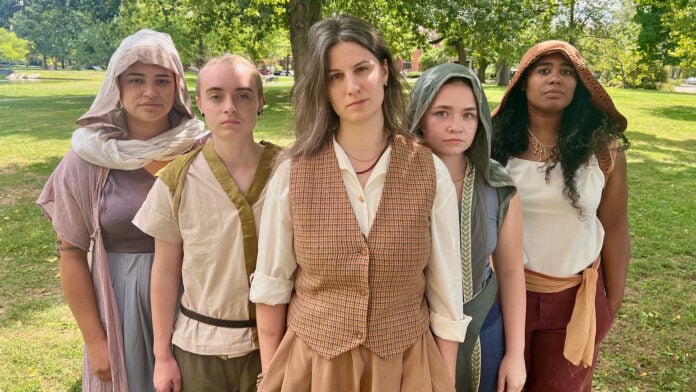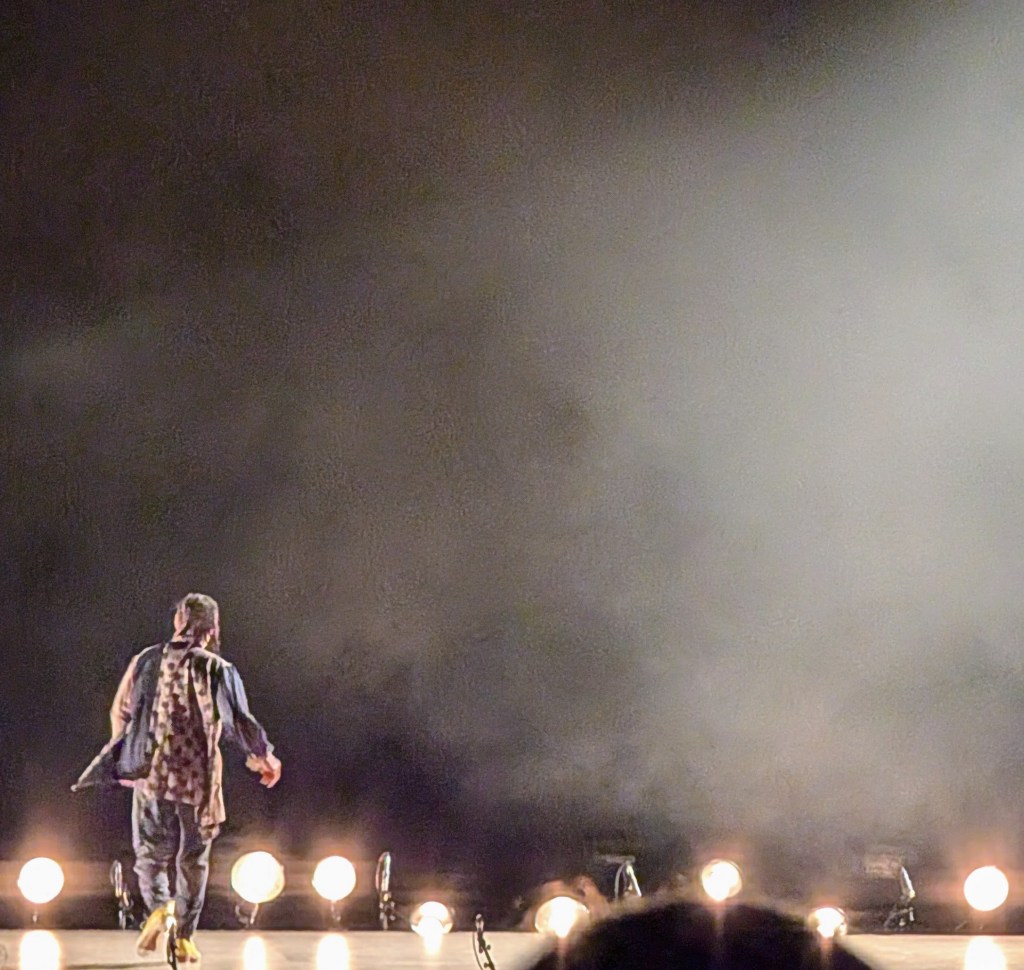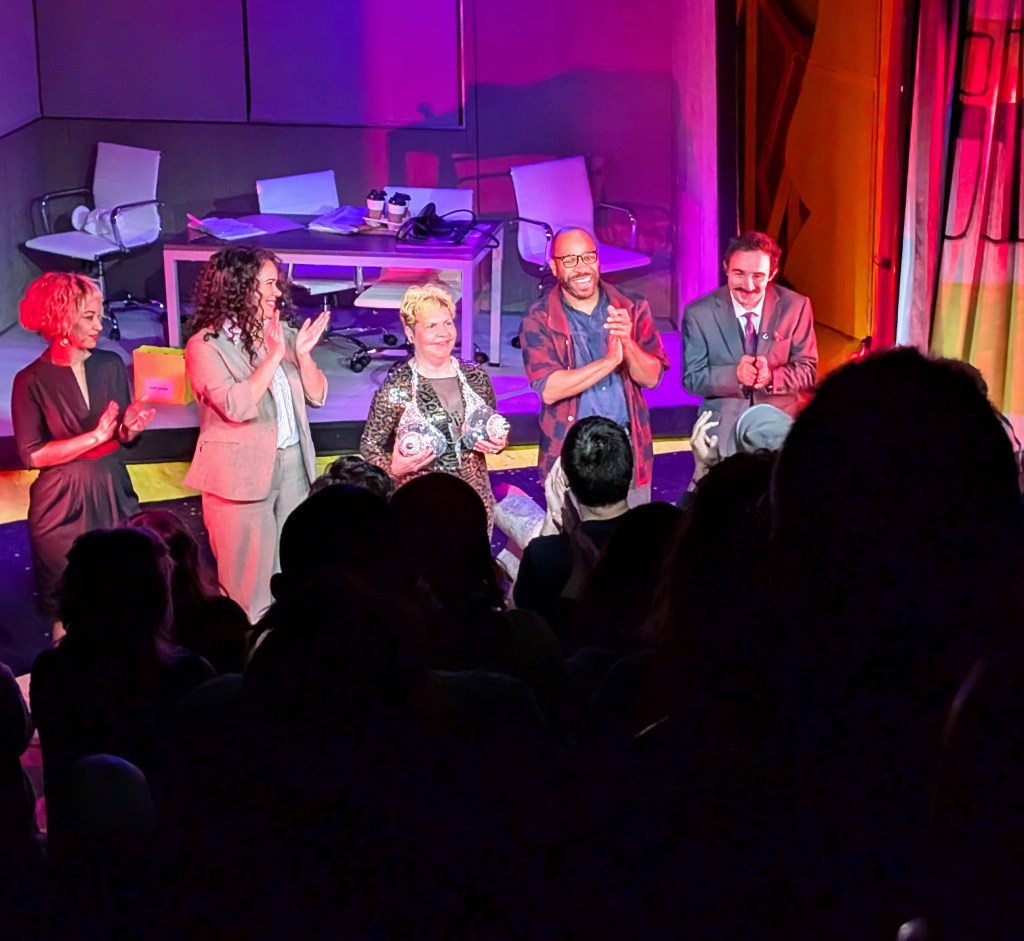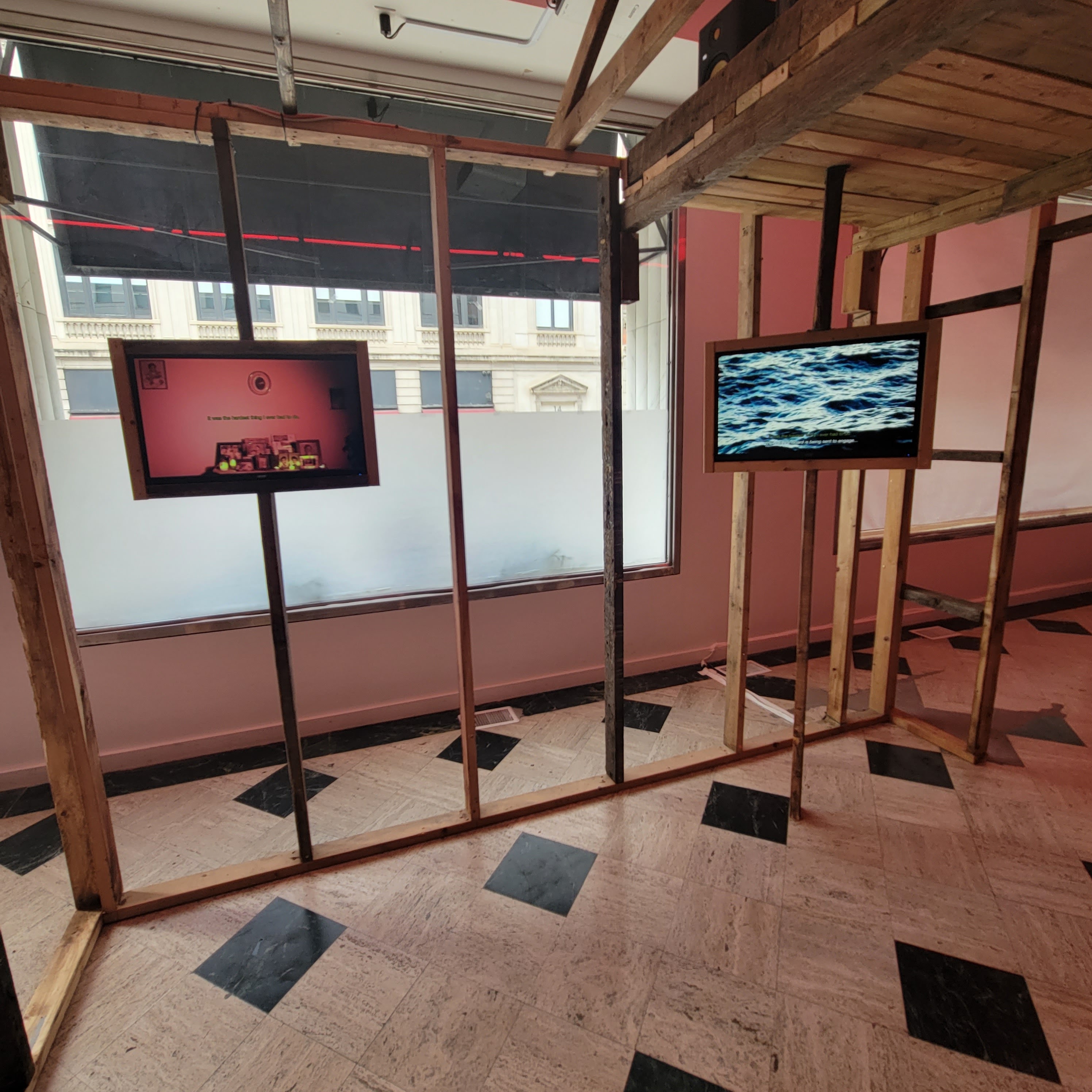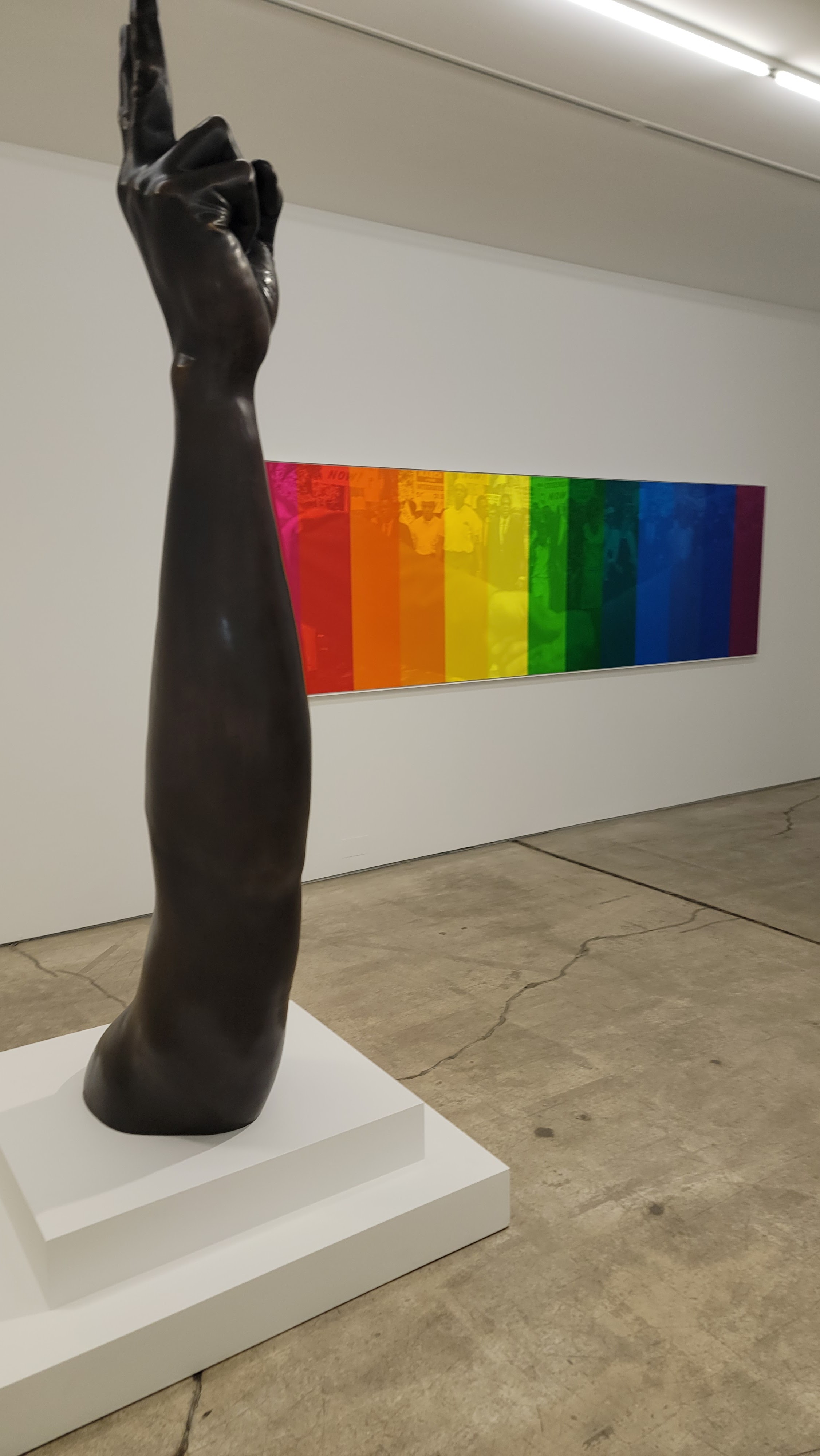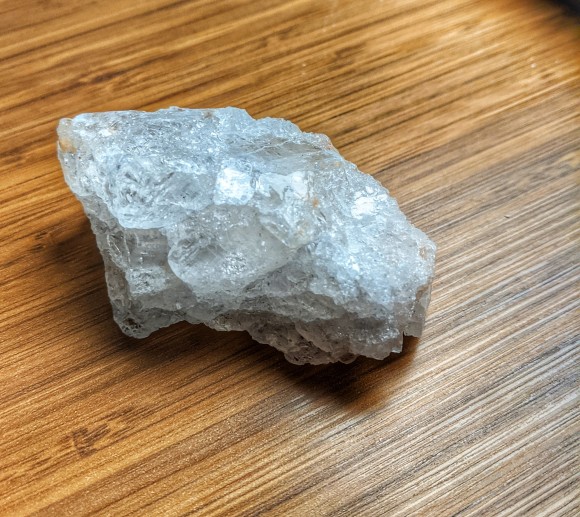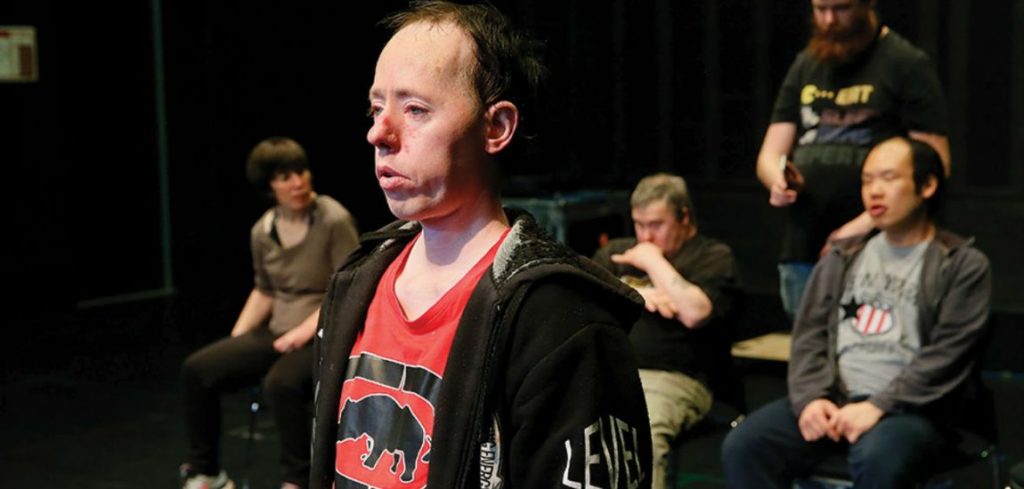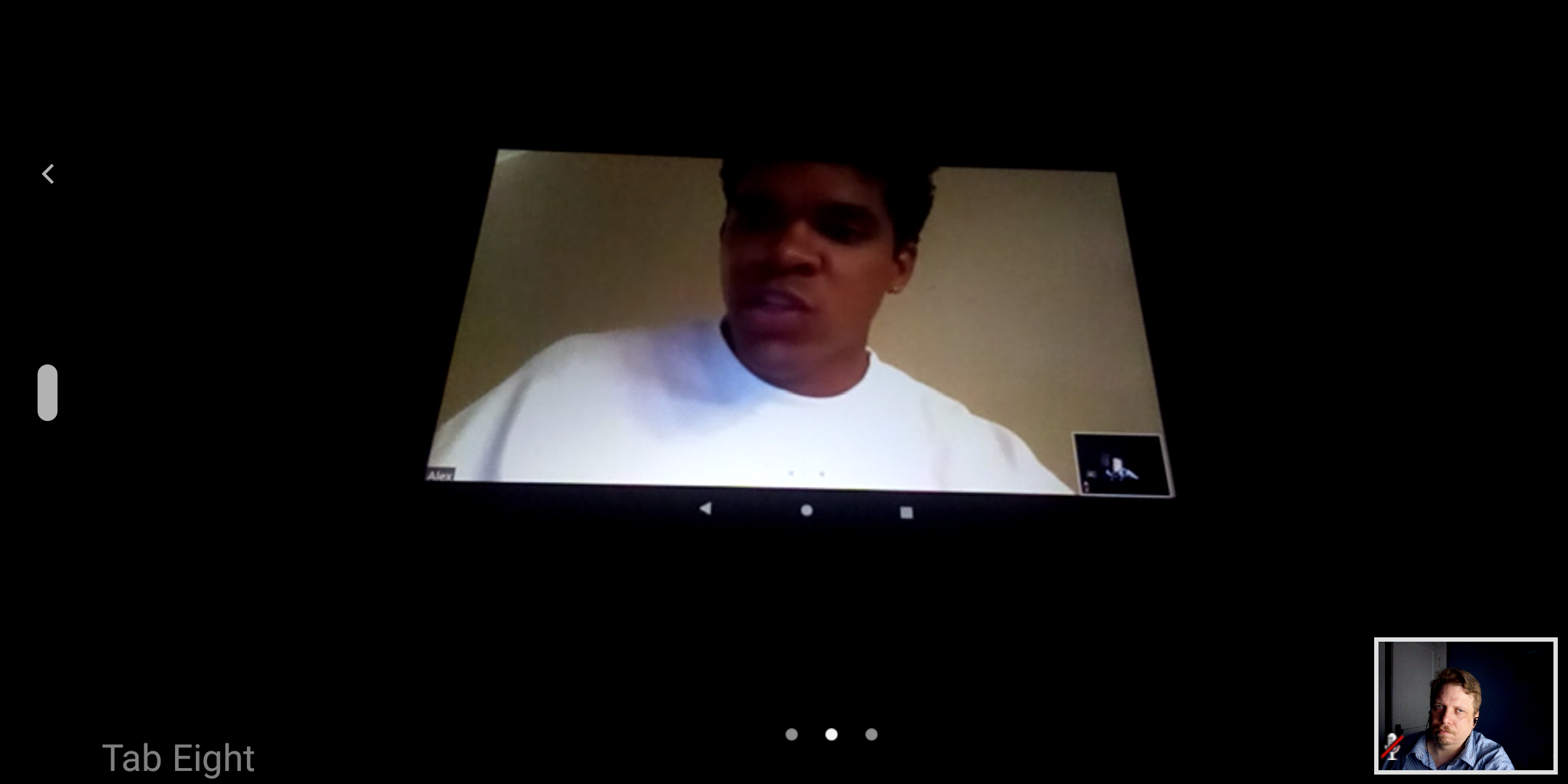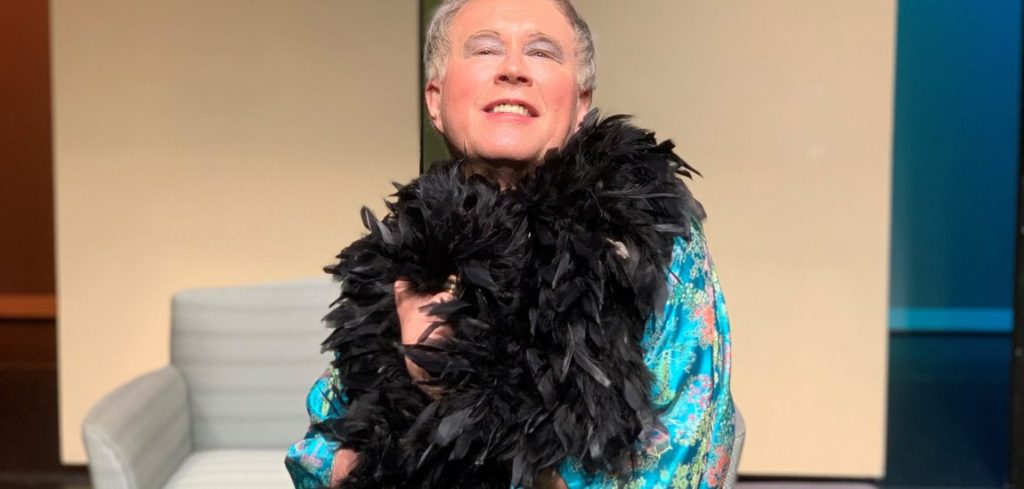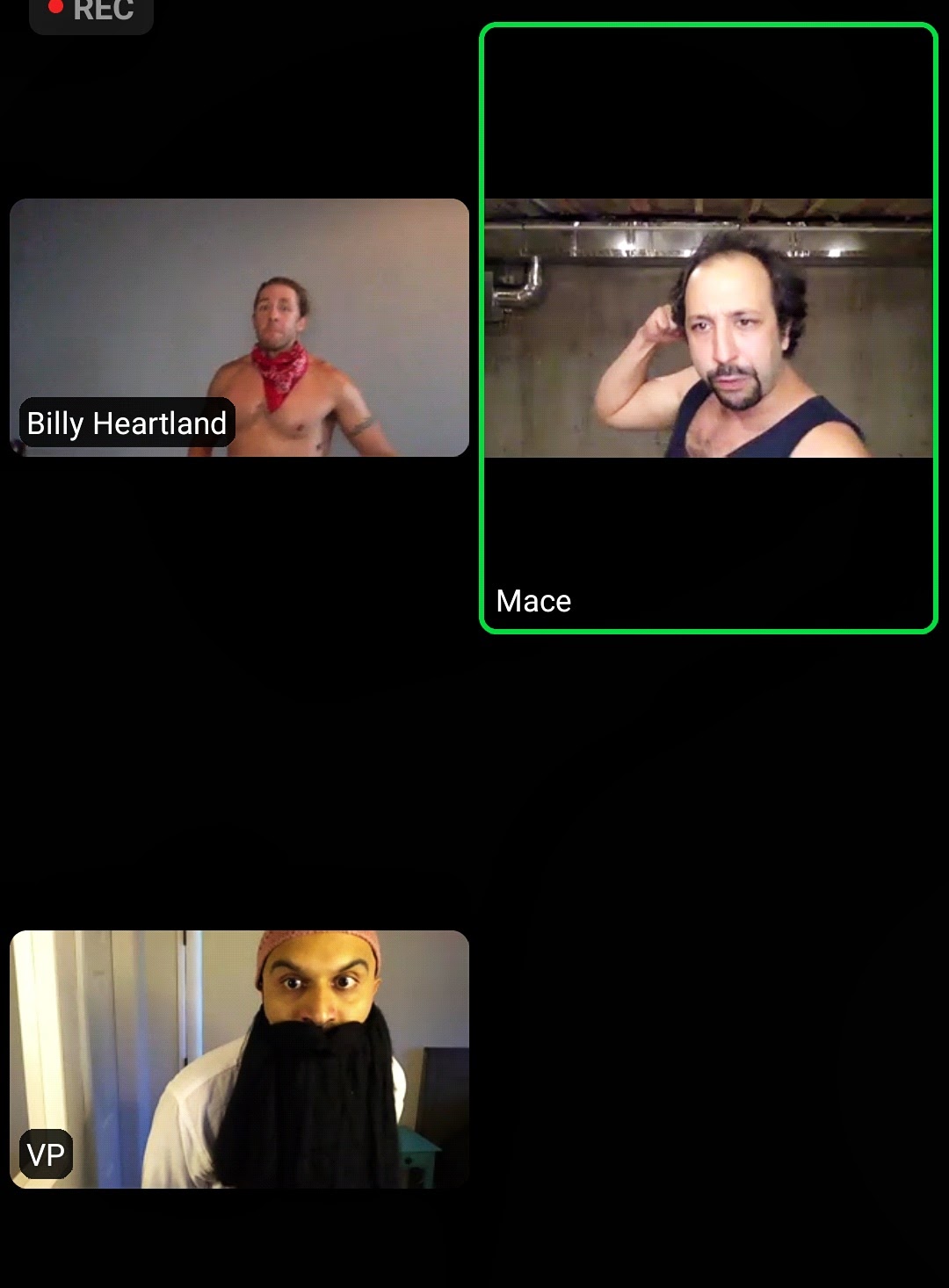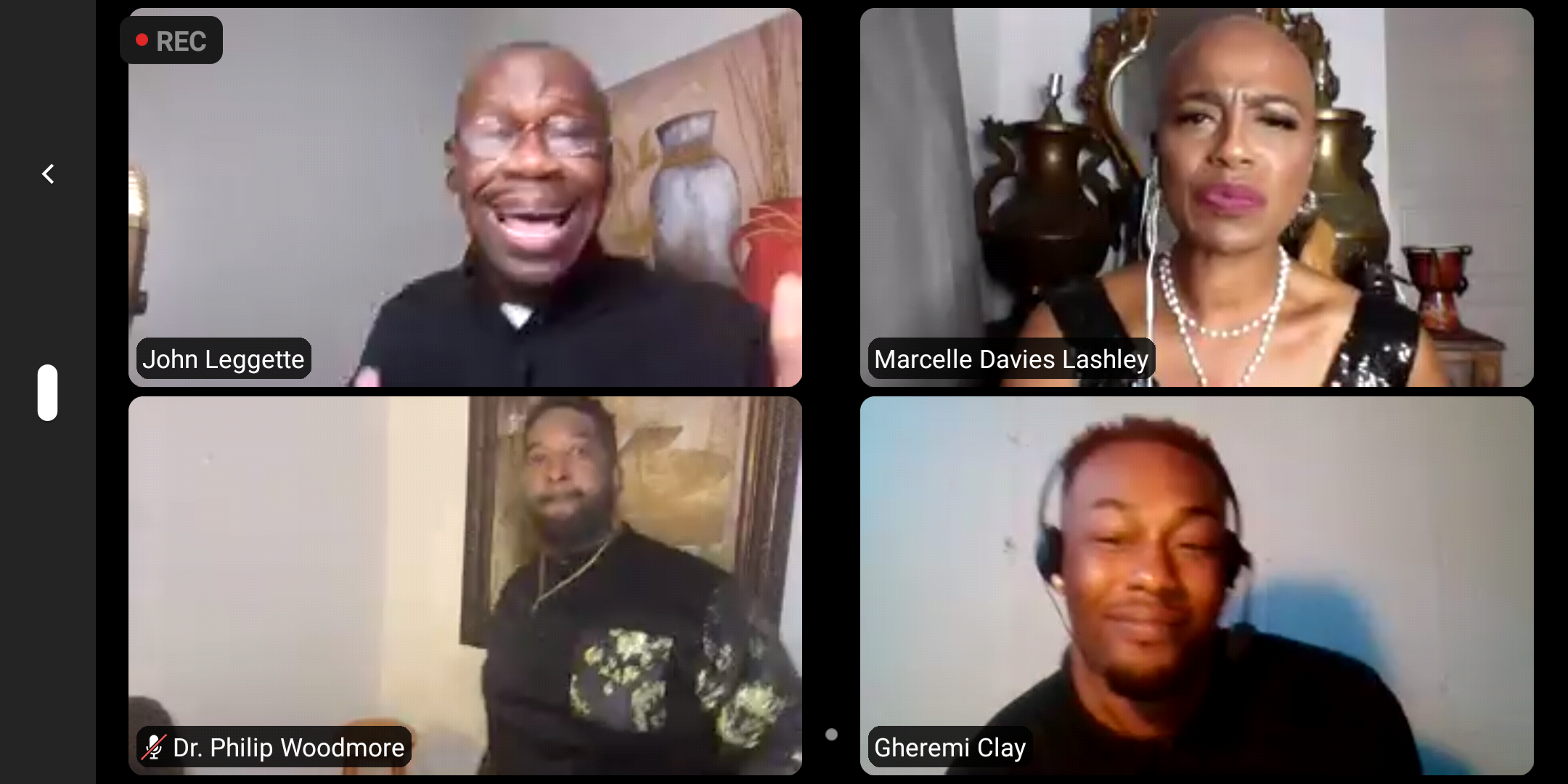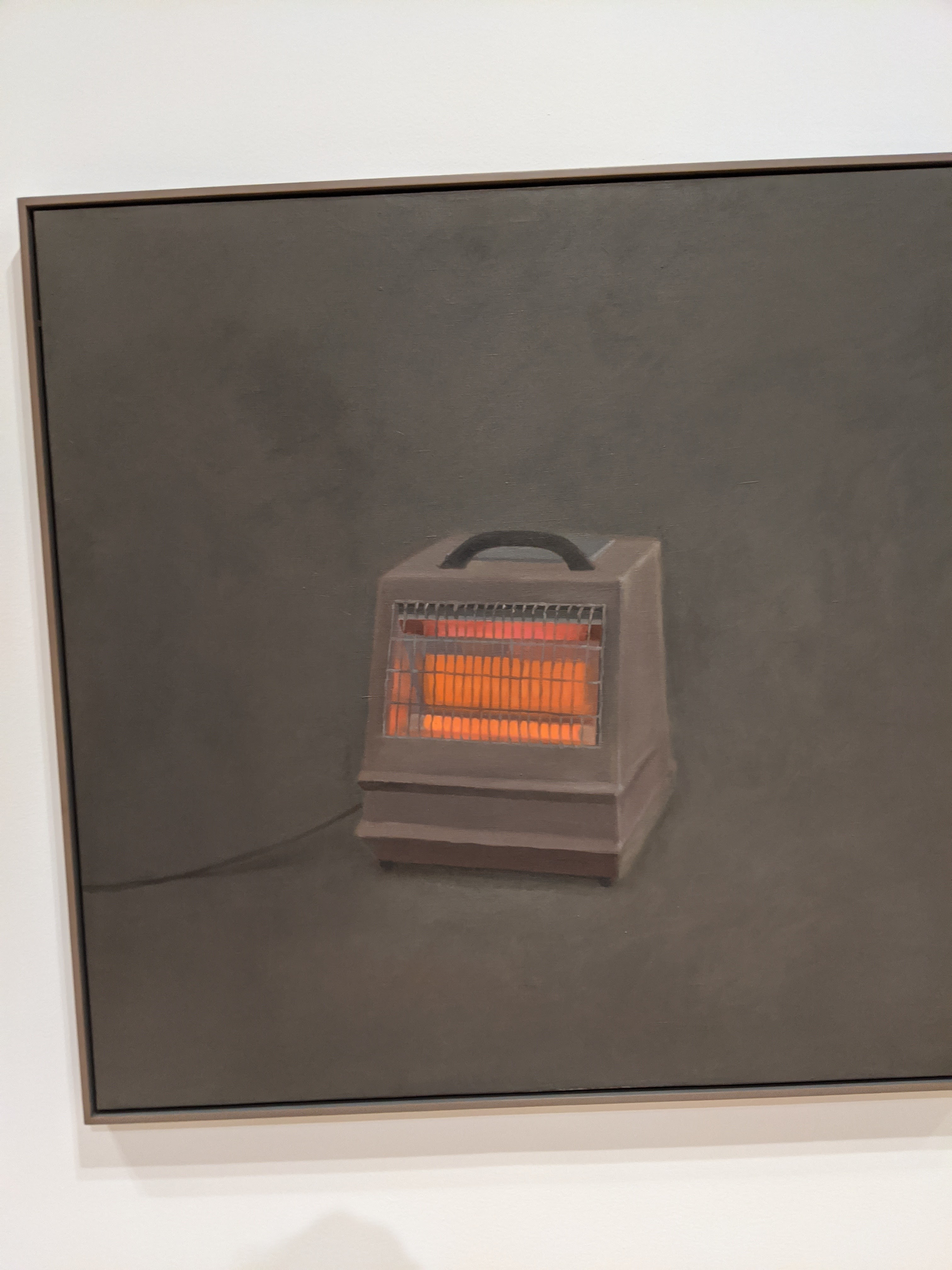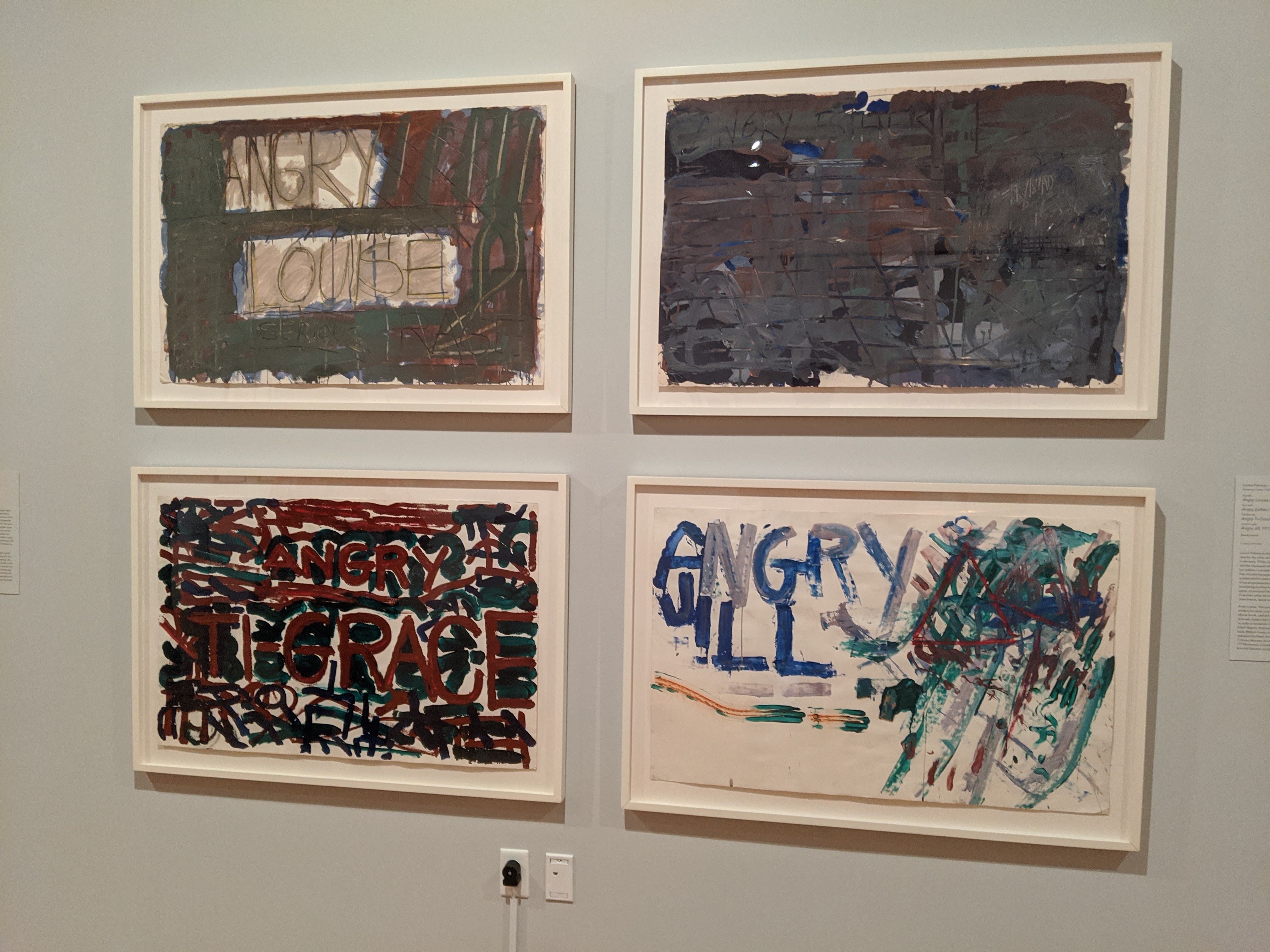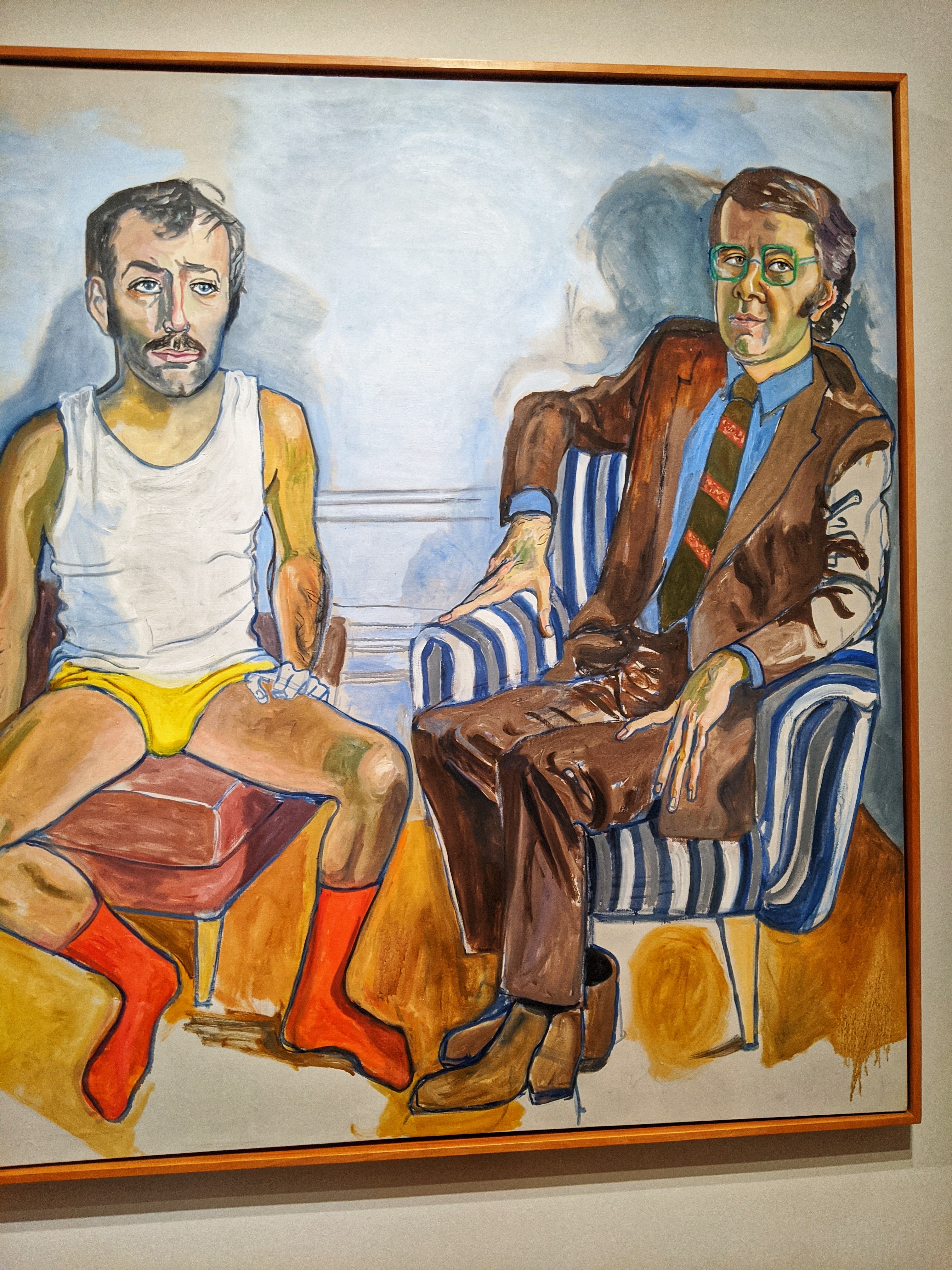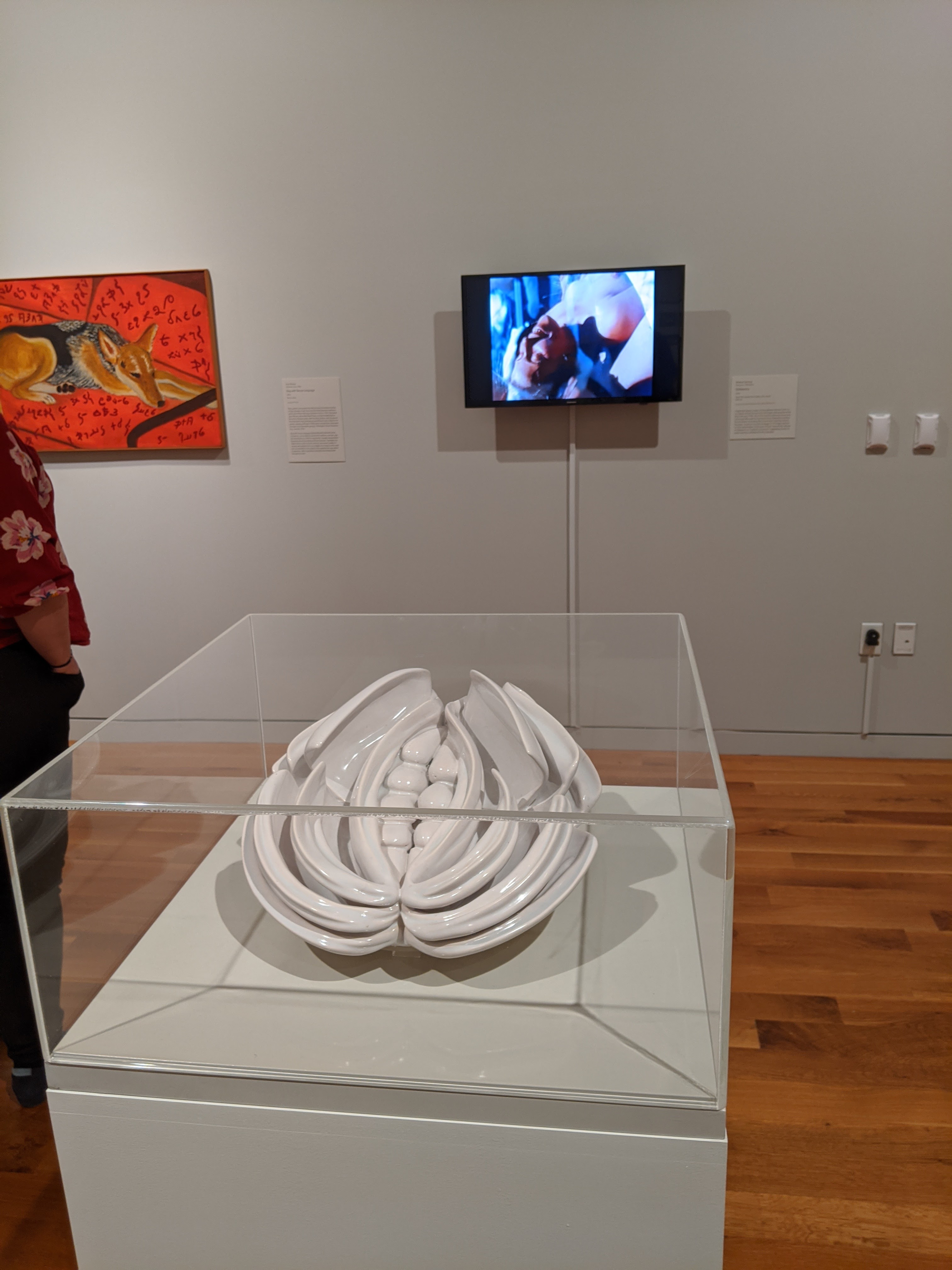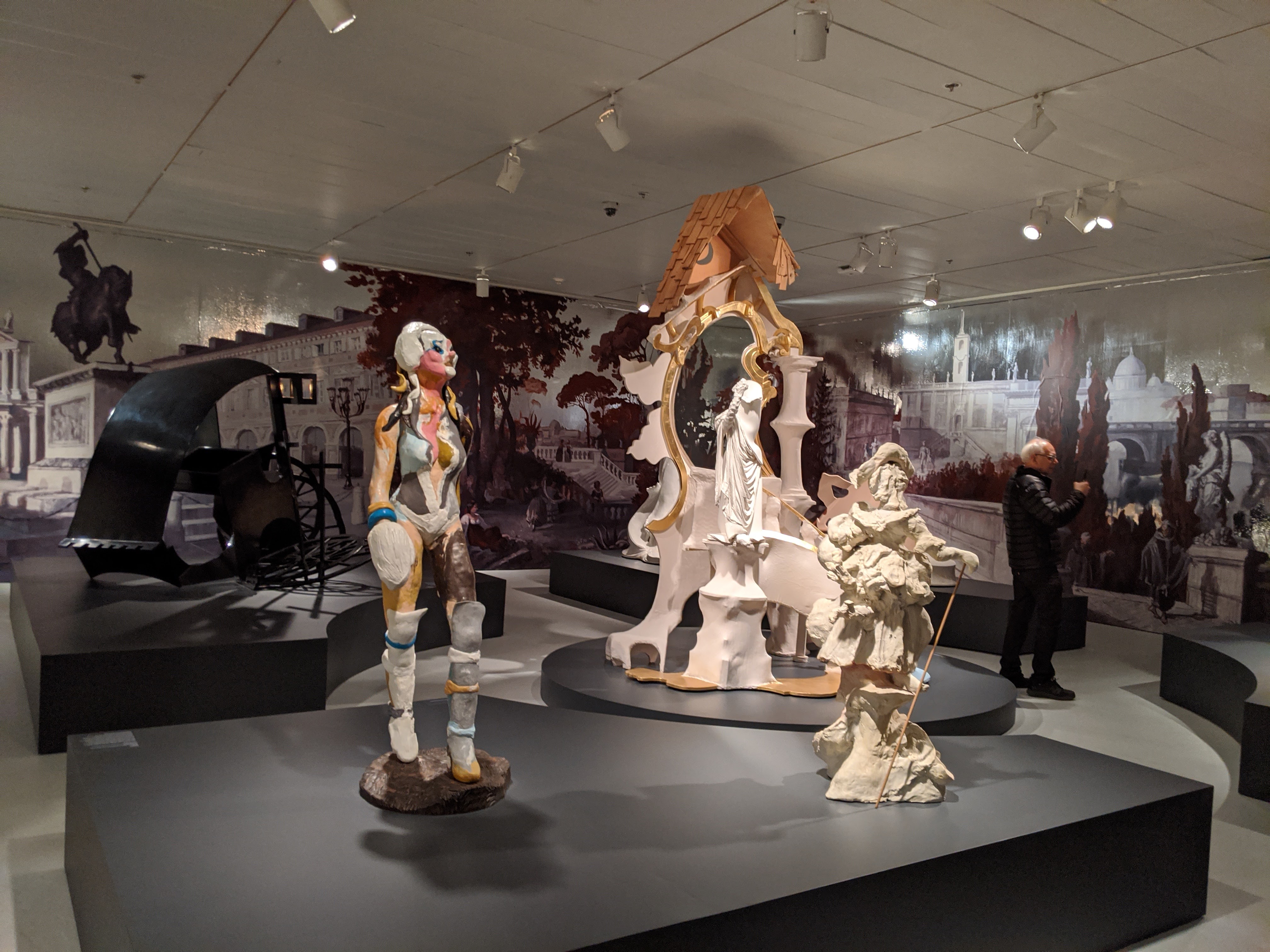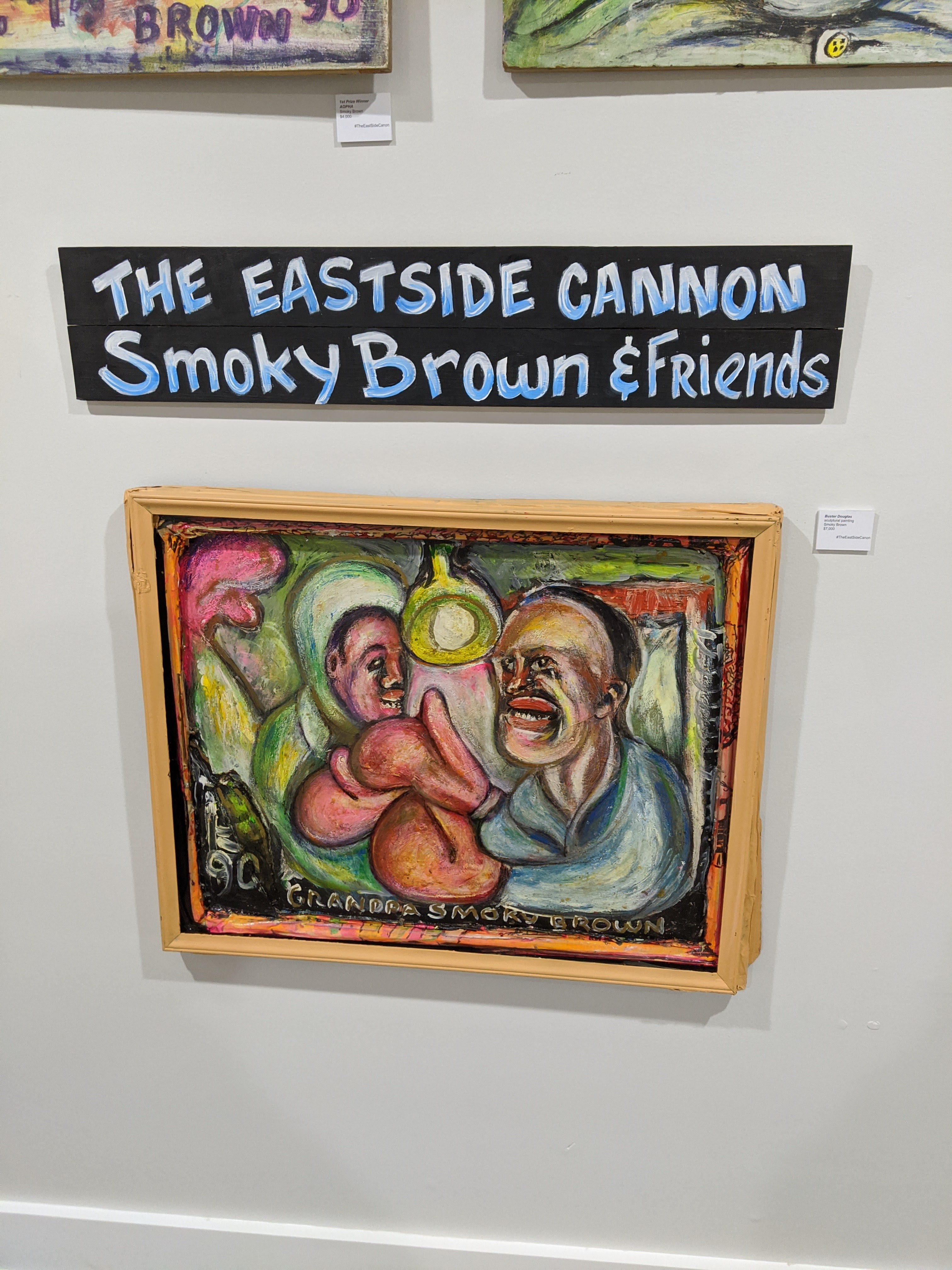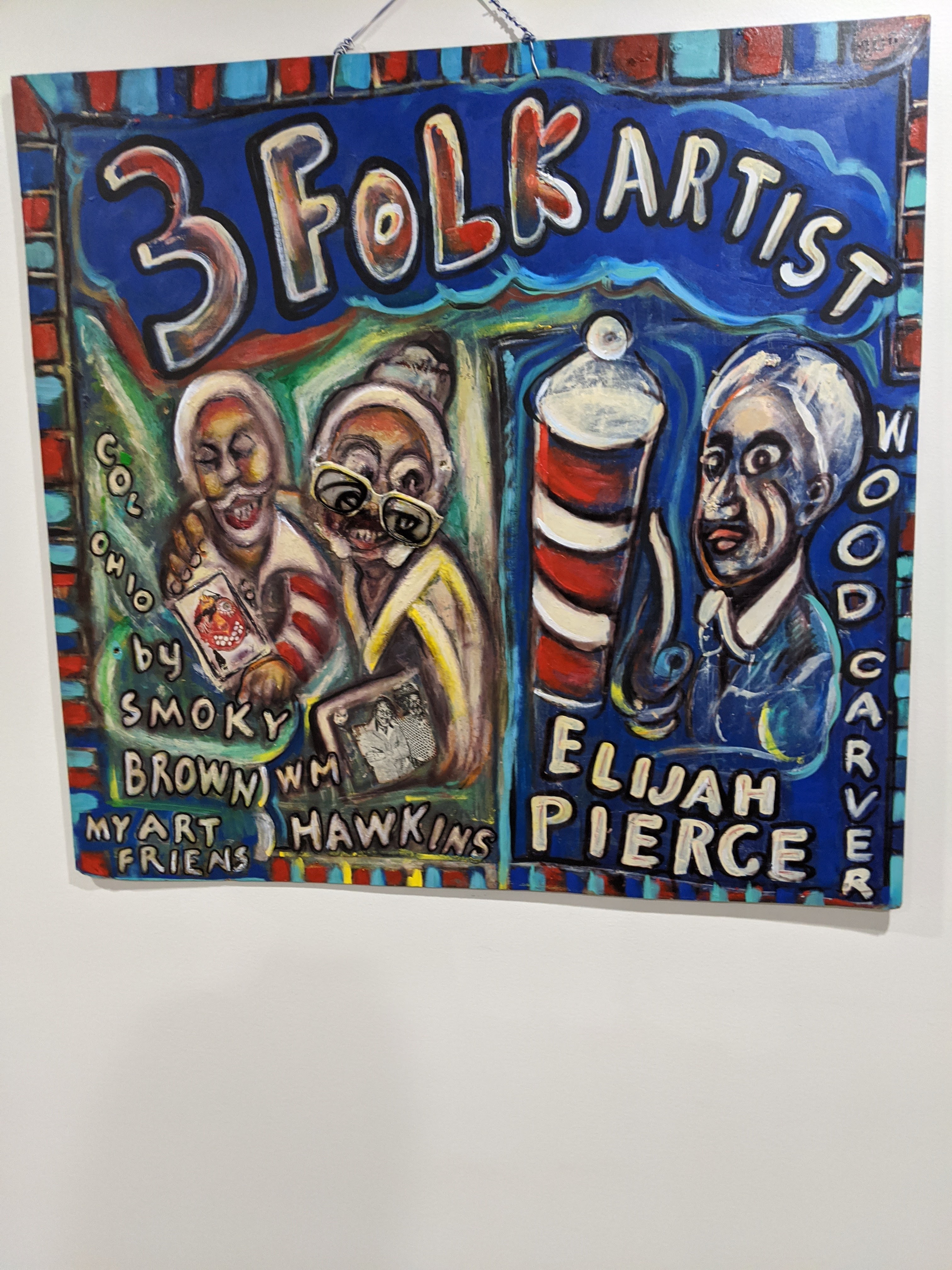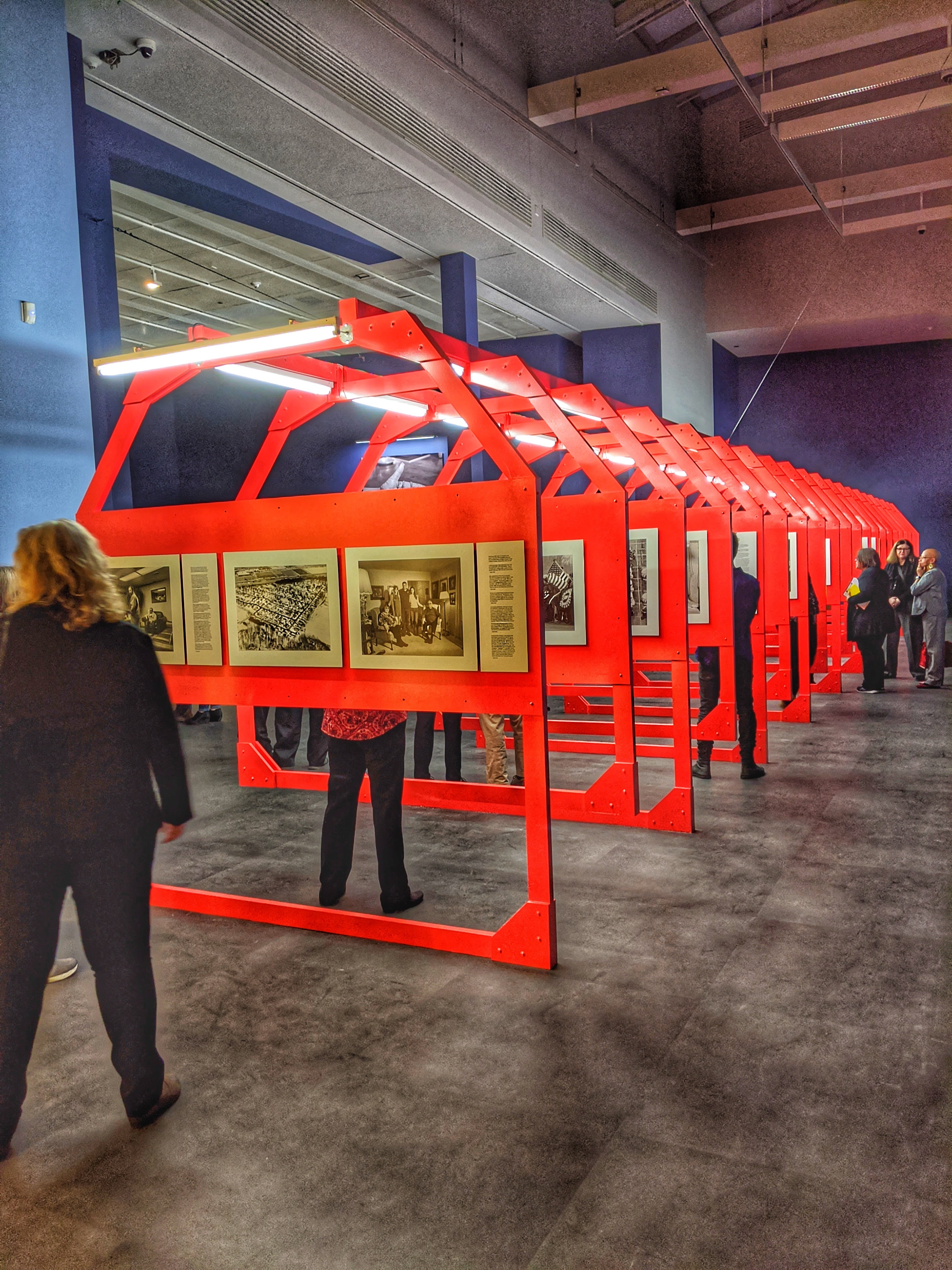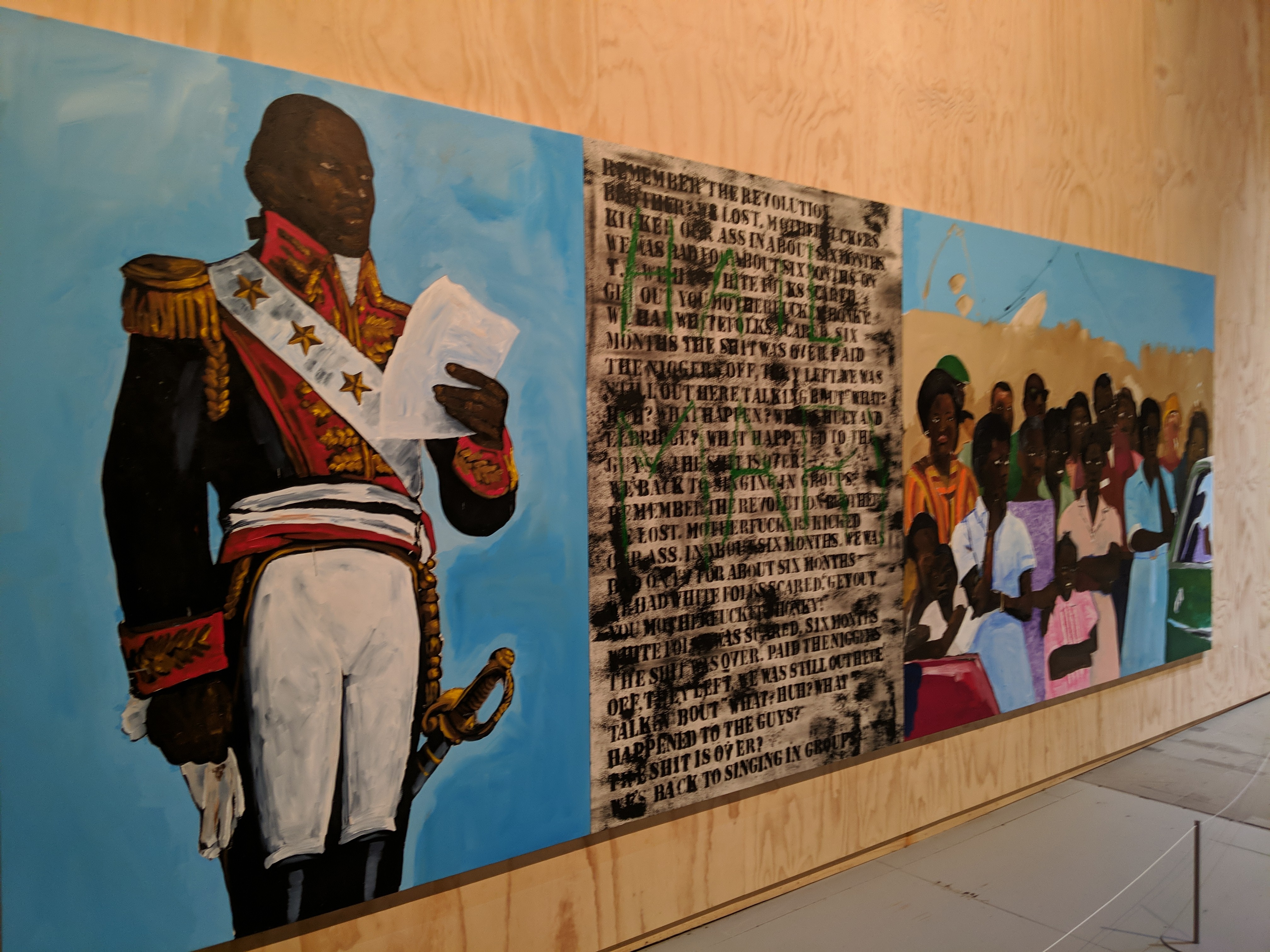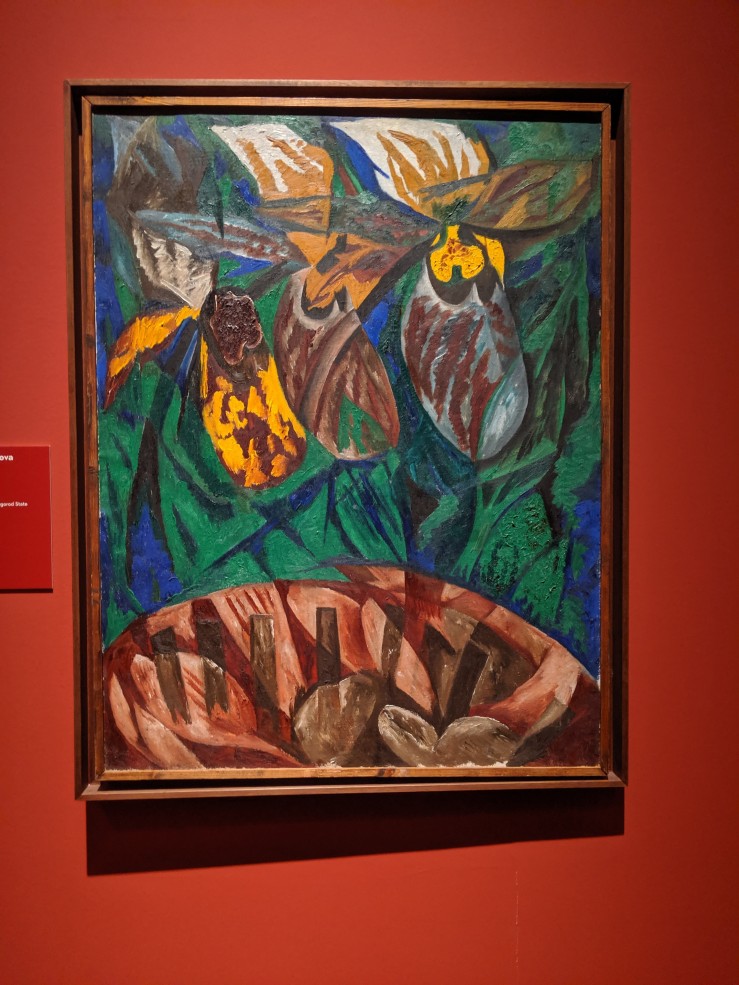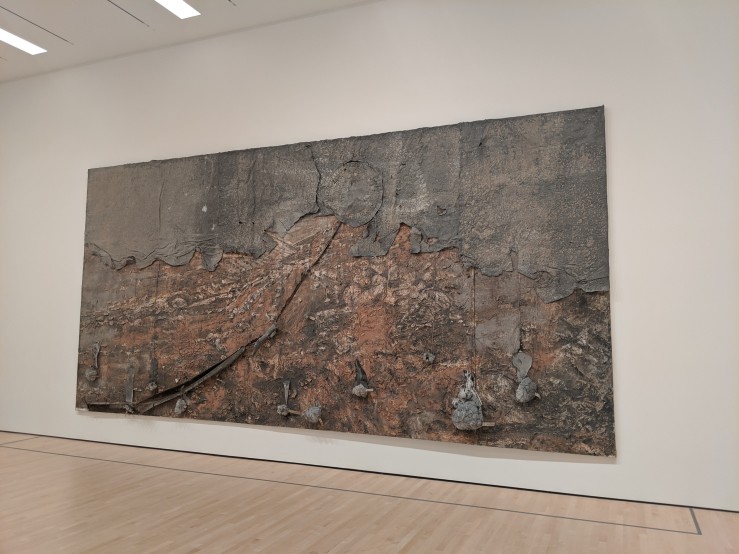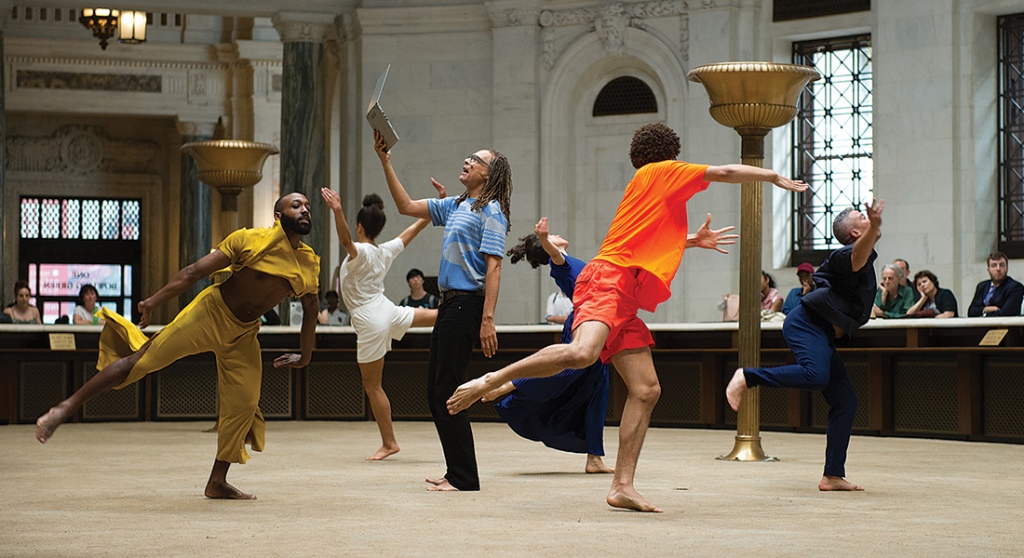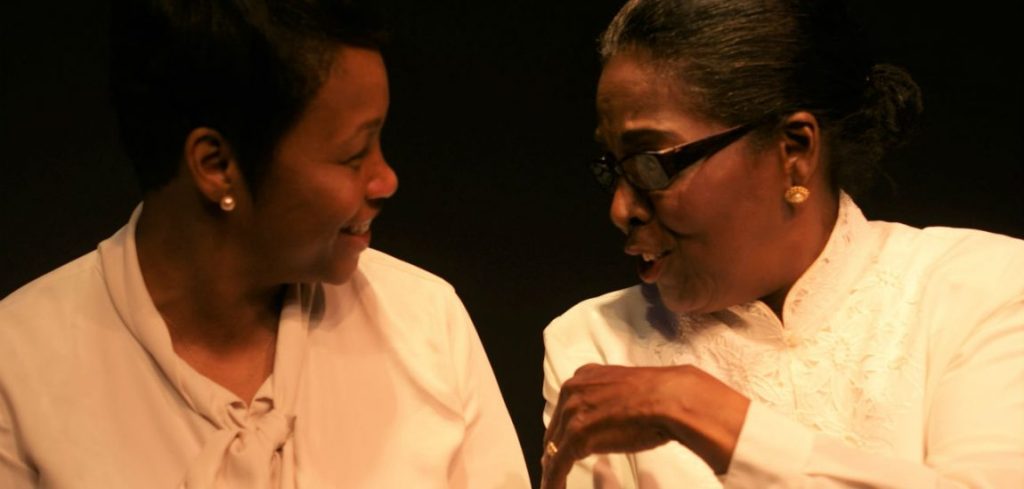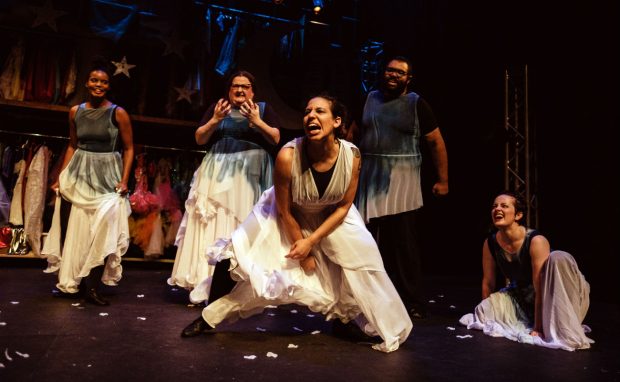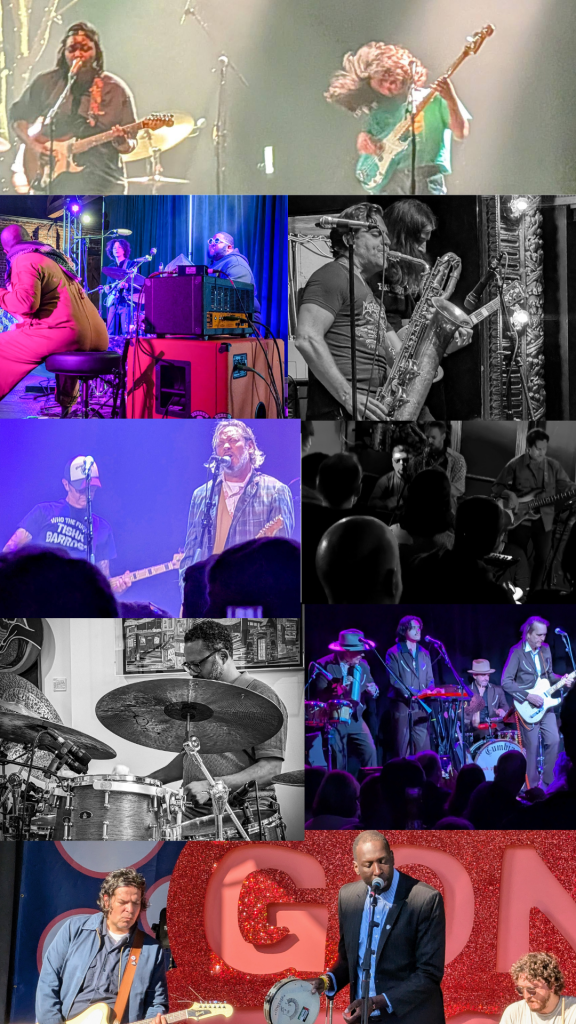
In a world that felt even more on fire than usual – by which I mostly mean the fire was closer to me personally – I found a lot to be grateful for: my friends, my partner, my family, my jobs. My most often source for solace was, as it has been since I was a teenager, live music.
Across nine cities, I saw about 150 shows (expect that to be fewer next year; I’m trying to be more intentional and include more deliberate days of rest each week). Unsurprisingly, Dick’s Den was at the top of my list, hitting an average of once every two weeks, with Natalie’s Grandview and Cafe Bourbon Street tied for second place at 12, and Ace and Rumba also tied at 7. Interestingly, the Columbus Museum of Art and the Wex tied at 4 each, and all of which were terrific. Because there was so much good stuff, I interpreted “Festival” a little more liberally, as anything with multiple stages or days.
No way of knowing what’s next, but there are already some shows I’m very excited for in the upcoming year, and choosing to set my eyes with hope rather than leap to despondency.
All photos are by me, everything is in Columbus unless stated otherwise, and the listings are in chronological order
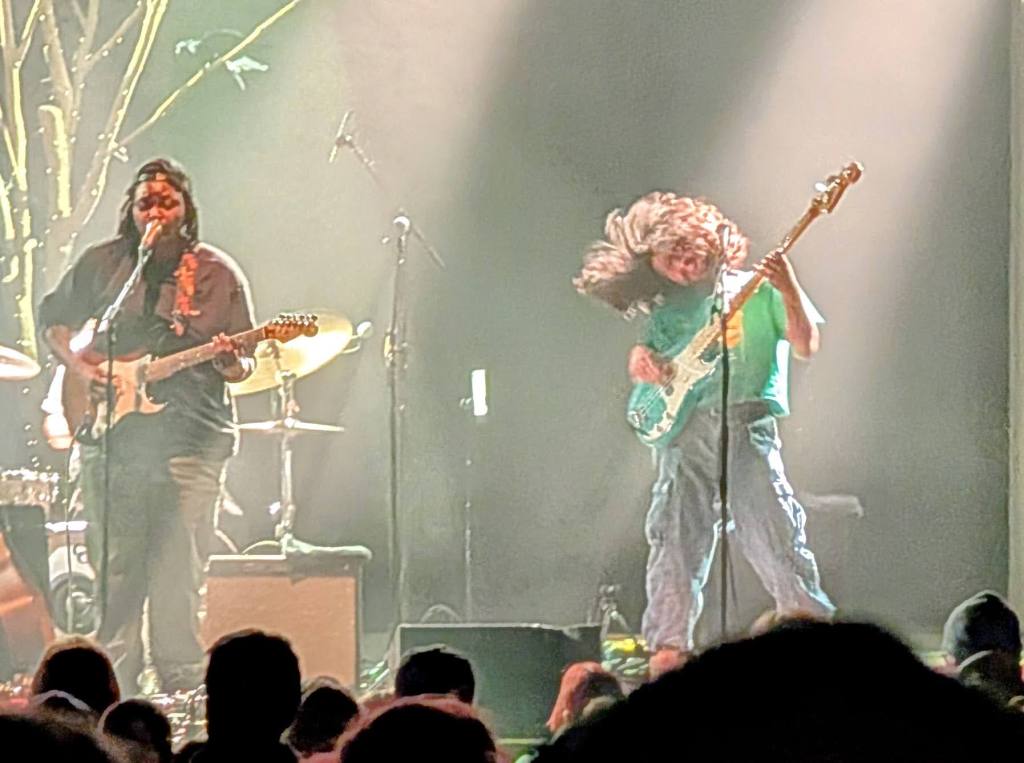
Top 25(ish) Shows
- Joy Oladokun (Newport Music Hall, 01/21/2025) – Not quite the first show of the year I saw, or even exactly the first touring show (John Calvin Abney, who had a banner this year supporting SG Goodman as well as putting out a stellar EP, did a joint show with Lydia Loveless at Secret Studio a little earlier), but in many ways finally getting to see Joy Oladokun after being a massive fan of her last two records in the room that held so many of my favorite shows of all time (Wilco, Morphine, The Cramps, Sonic Youth, Medeski Martin and Wood/Chocolate Genius, X/The Detroit Cobras) set the tone perfectly and gave me a shot of burning resolve right after the inauguration. I thought the mix of solo acoustic and full-band numbers highlighted both sides of her work in a way I’ve seen a lot of singer-songwriters try but very rarely pull off anywhere nearly as well, and made some of the textures – revealing a surprising (to me) contextual thread between her Observations From a Crowded Room and Don Henley’s Building a Perfect Beast – appear in greater detail and relief.
- Chuck Prophet and his Cumbia Shoes (Natalie’s Grandview, 02/05/2025) – I’ve never seen a bad Chuck Prophet show – the rare universally acclaimed songwriter who’s every bit as powerful a bandleader – but this flourishing of his merging a couple of members of his longstanding unit Mission Express with Cali cumbia band ¿Qiensave? into Cumbia Shoes hit another level of powerful catharsis, nuance, and unbridled fun.
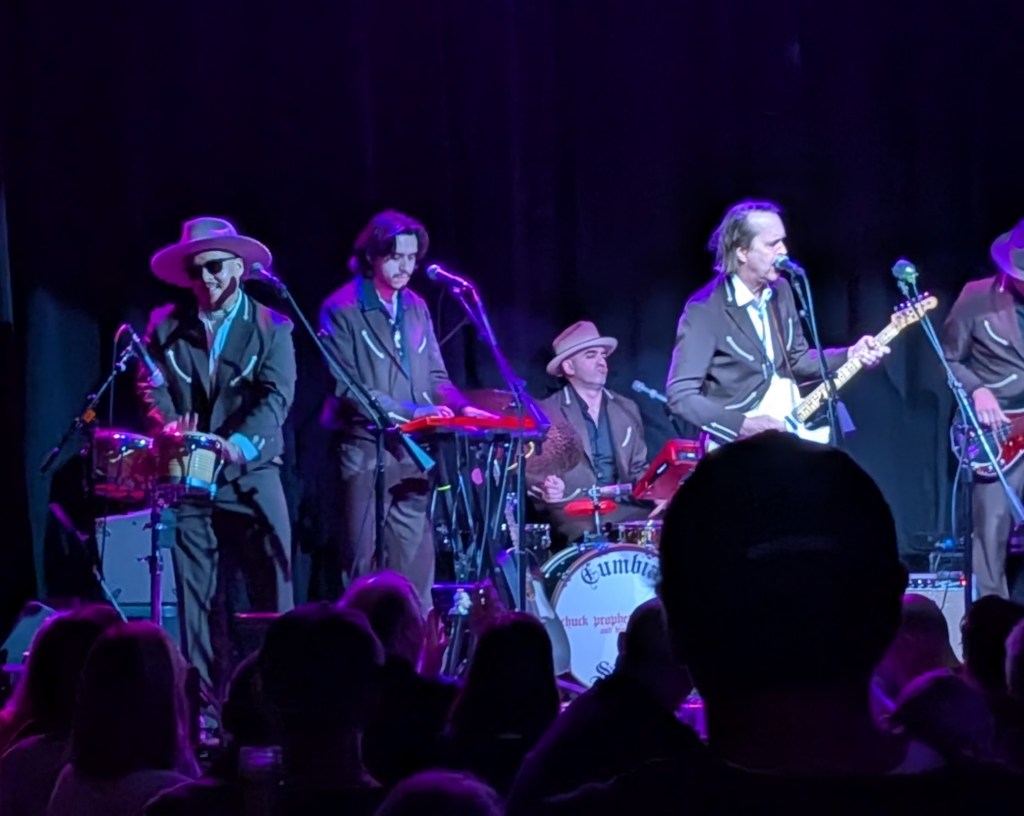
- Joel Ross’s Good Vibes (Wexner Center for the Arts)/Joel Harrison’s Anthems of Unity (Natalie’s Grandview), both 03/06/2025 – Talking to a good friend and stalwart of the NYC and, now, LA, jazz scene about how the touring climate was in town, I brought up this particular evening when I got to see the first set of vibes maestro Joel Ross’s crushing current Sextet (that interplay of Maria Grand on alto and Josh Johnson on tenor in the frontline seared my eyebrows off), an unbroken suite of music blending Ross’s originals and standards that turned my head around then drive 10 minutes and see the astonishing guitarist Joel Harrison do his Anthems of Unity book with two of our local heroes, organist Tony Monaco and drummerr Louis Tsamous. These two approaches to jazz/improvised music/the history of American music, and the way both of these artists approached the canon and the way music can be about the rest of the world instead of being hermetic or closed reverberated hard against each other in my chest.
- Deli Girls with Deionyx (Cafe Bourbon Street, 04/04/2025) – Over the last couple of years, Bobo has reclaimed the throne as my favorite place to see noisy, edgier rock and roll and one of my favorite places to see more underground-leaning DJs. This show scratched both of those itches hard and deep – NYC’s Deli Girls’ mix of grinding, throbbing rave beats, acid-singed noise, and in-your-face punk and Deionyx’s bleeding edge soulful-at-an-angle set of surprising and powerful records both made my heart incredibly full, as did the room packed full of people 15-25 years younger than I am.
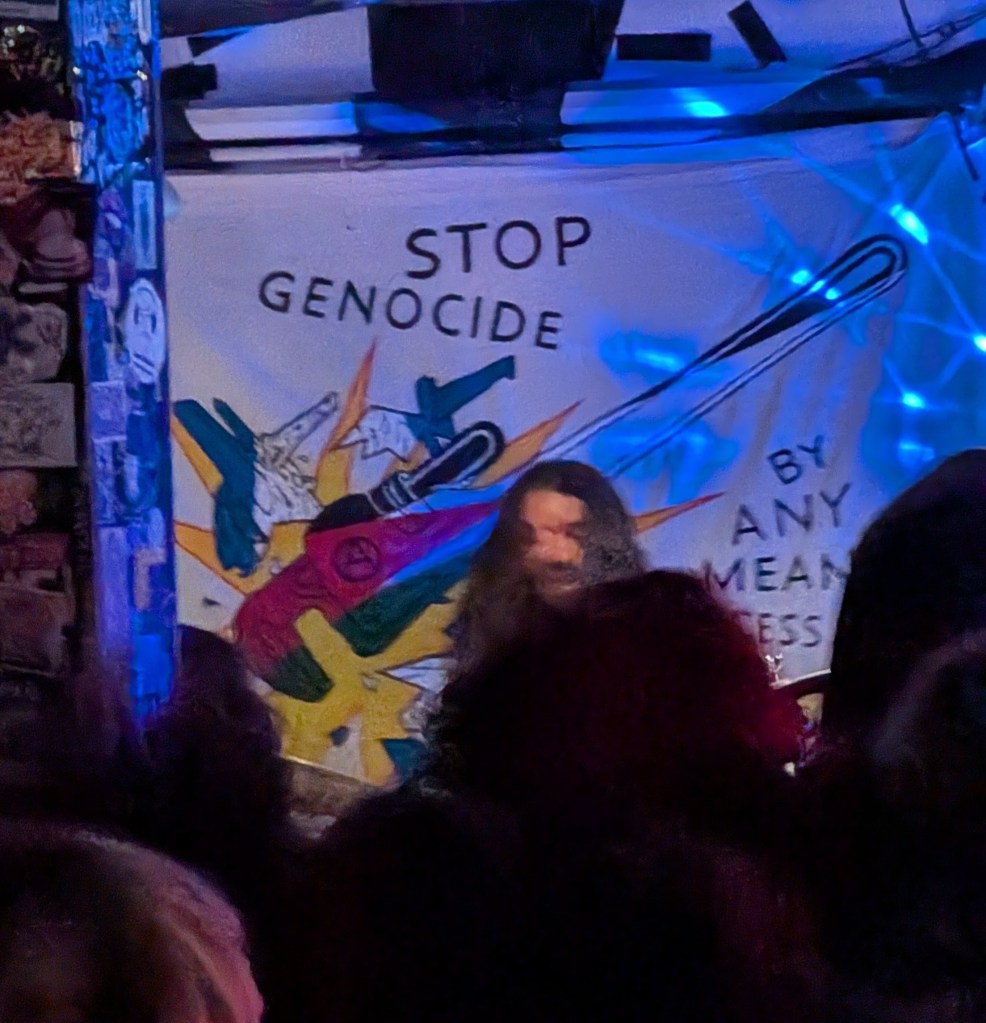
- Greater Columbus Community Orchestra with Brian Harnetty, The Visitor (Hilliard Presbyterian Church, 04/06/2025) – Banner year for composer Brian Harnetty, who released a remarkable memoir, Noisy Memory, and put out a gorgeous recording of string quartet and samples The House, and a visual installation This Was Once a Forest, This Was Once a Sea, as well as premiering this rich, sparkling brass ensemble piece with the Greater Columbus Community Orchestra that I’m still feeling vibrate through me.
- Nikhil P. Yerwadekar and Living Language (Barbes, NYC, 04/11/2025) – Because the sole New York trip this year was to celebrate my 45th birthday with a gang of my favorite people in the world, there were fewer distinct cultural items on the calendar. But this was an extreme highlight: Yerwadekar, whom I last saw backing Hailu Mergia at a Big Ears, leading a ferocious band through Afrobeat classics and originals in a wall-to-wall-packed Barbes back room where no one stopped moving. Made even sweeter as my great friend Andrew Patton’s inaugural visit to one of my temples of music.

- The Lilybandits with Two Cow Garage (Natalie’s Grandview, 06/05/2025) – I think anyone who’s read ten lines I’ve written or spent ten minutes in my presence knows I think Todd May’s the greatest songwriter Columbus has ever produced. They culminated an important reissue project of his first mature band, The Lilybandits with At Thirty Three and a Third this year, and lost its drummer and their lifelong friend Keith Smith last year. This extremely rare reunion of the original core members (May, Trent Arnold, Jose Gonzalez, Bob Hite) with longtime friend Keith Hanlon filing in on drums, Bob Ray Starker providing the horn lines he gifted them with on those records, and Smith’s son joining on a few vocals, was probably the biggest reminder of how much I love my town all year, wrapped up in a rock show that made hard to believe they’d only gotten together to run through the songs once. Two Cow Garage, long influenced by the Lilybandits (the first time I ever saw Two Cow, they did a Todd May song and dedicated it to “The genius of Bernie’s”) set the tone with a set of jubilant catharsis.
- Charles “Wigg” Walker (ACME Feed and Seed, Nashville, 06/14/2025) – My eyebrows shot up when I saw Charles Walker – who I knew from his days with the Dynamites (who the Funkdefy collective, at the time including the above-mentioned Andrew Patton, booked in Columbus more than once, and my great friends in St Louis, at the time including fellow Columbus legend Matt Benz booked at Twangfest – was doing a regular brunch gig when Anne and I already planned to be in Nashville. We juggled our schedule to make sure we were in town in time for this and stayed for two sets: Walker still in perfect voice, backed by a sizzling organ trio led by his longtime Dynamites foil Charles Treadway, going through stone soul classics and gorgeous new originals.
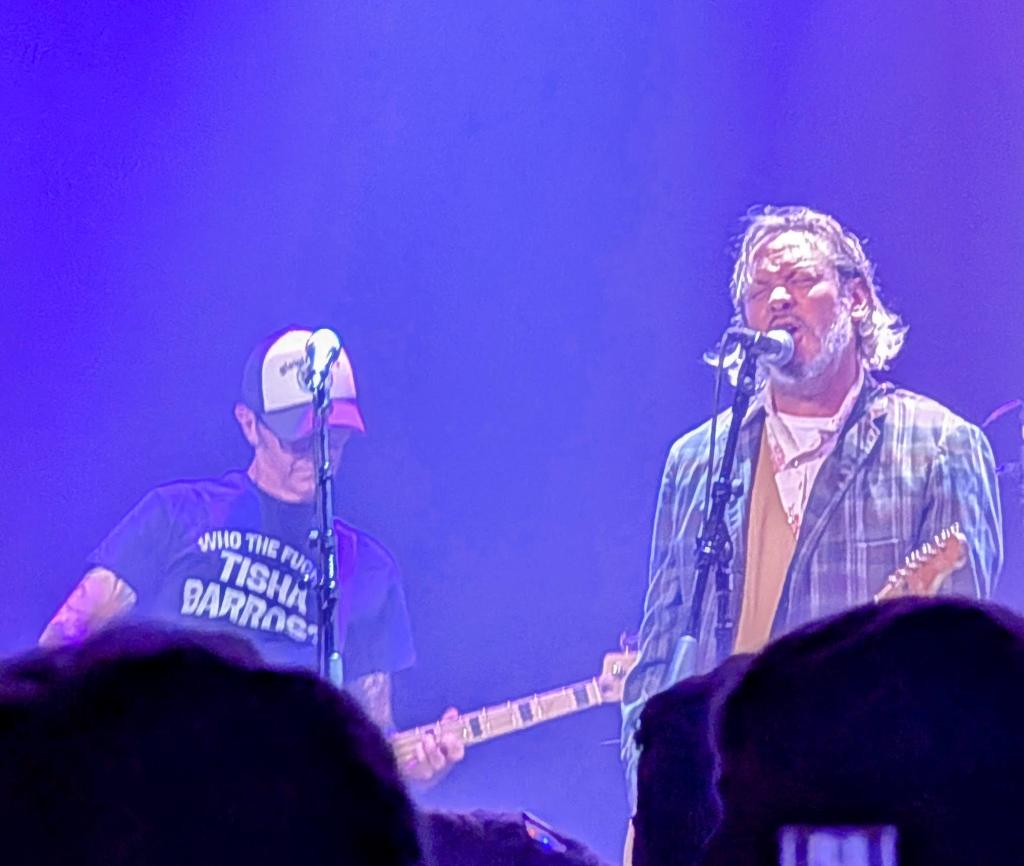
- Dan Baird and Homemade Sin (Eastside Bowl, Nashville, 06/14/2025) – If the only thing this show gave us was the five minutes of Dan Baird and his killer band opening with the Open All Night highlight “Sheila,” with Baird’s grin and electric presence, it would have justified the six-hours drive each way, the hotel cost, all of it. But it gave us so much more. 45 minutes of blistering rock and roll, led by someone who, at 71, is outplaying and dancing rockers a third of his age. Also, this was a beautiful look in the way other scenes take care of their own, organized by Warner Hodges (Baird’s guitar foil in Homemade Sin, longtime lead player in Jason and the Scorchers), here leading his own band and sitting in with every other set in a benefit for his former Scorchers bandmate Jeff Johnson.
- Sam Johnson and Noah Demland, Contrary Motion (Wild Goose Creative, 06/20/2025) – The second or third year in what I hope continues as a series exploring the history of Queer chamber music/new music featured new originals from organizers Sam Johnson and Noah Demland, classics of the canon from Pauline Oliveros and John Cage, and contemporary pieces from Caroline Shaw and Leilahua Lanzilotti by a tight ensemble of some of our best players. A brilliant glimpse of where this music is, how it got here, and how relevant it still is.
- Say She She (Woodlands Tavern, 06/20/2025) – Finally got to see my favorite of the current neo-disco bands, NYC’s Say She She, and they tore the roof off Woodlands in a crowd full of people I mostly didn’t know (besides Anne and my Providence-based friend Daria, maybe we knew two other people in a nearly sold out room) all dancing in a sweaty, delirious mess. The reason I went from the show above to this show, but they got separate listings, is that they felt like very distinct events to me; they didn’t resonate against one another like the couple of shared line items.
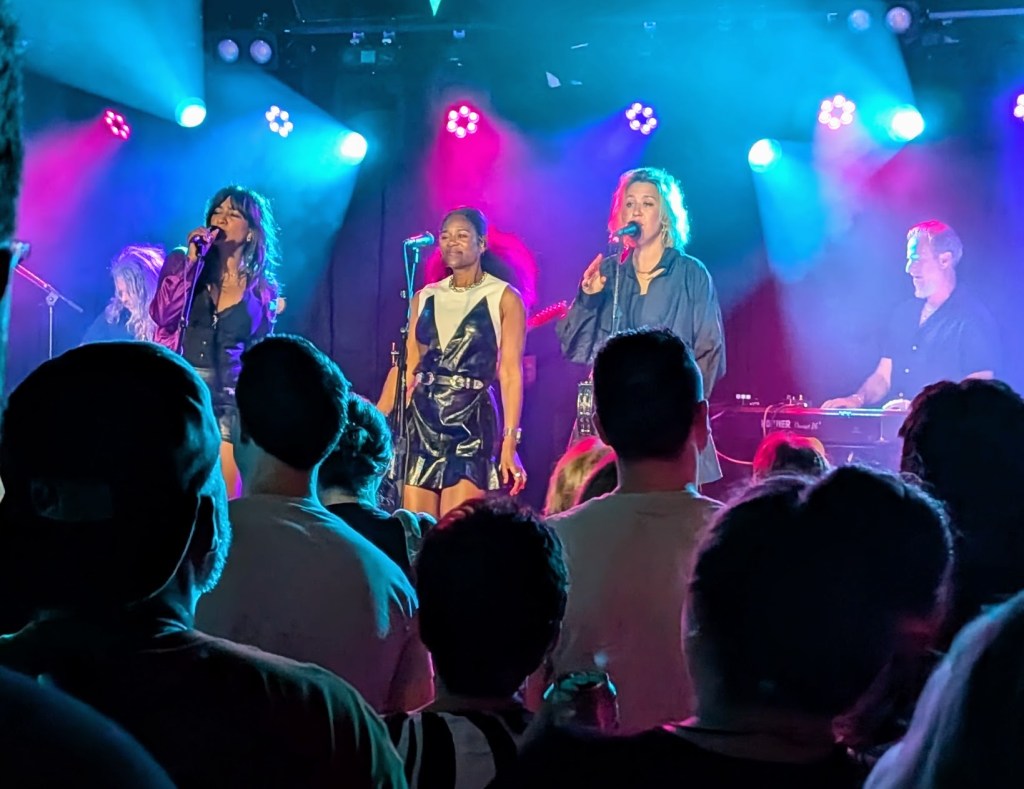
- Budos Band with Benny Trokan (Woodward Theatre, Cincinnati, 07/15/2025) – One of the great live bands I’ve seen in 30 years of seeing live music, Budos Band, retained their crown on a gorgeous summer night in a venue I hadn’t made it to in Cincinnati previously. Icing on the cake was Benny Trokan – who Anne introduced me to in his days with Robbers on High Street – with a tight, swinging four-piece going through the lovely smooth soul of his recent solo record.
- Mike Dillon’s Punkadelick (Dick’s Den, 07/18/2025) – Columbus is lucky to get percussionist Mike Dillon coming through our fair city a decent amount, but what made this show special was the presence of New Orleans drummer Nikki Glaspie, who’s shared the stage with Beyonce, Ivan Neville, Snarky Puppy, and Nth Power. That powerhouse sense of the multiplicity of groove and the emotional content of the song took both sets I stayed for into outer space.
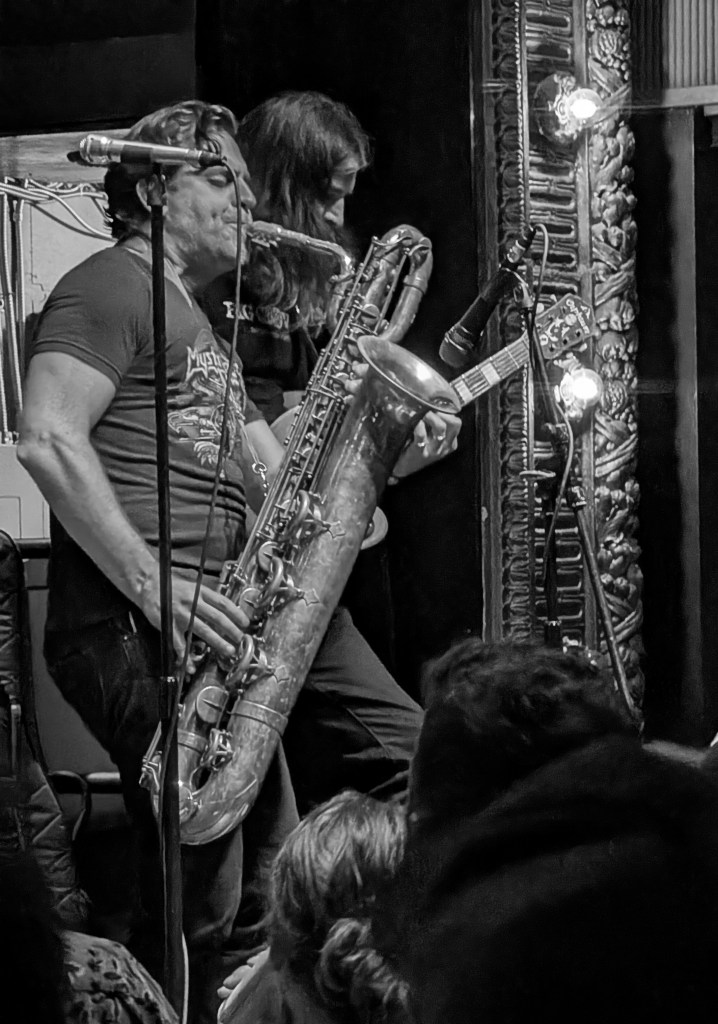
- Vandoliers (Rumba Cafe, 08/12/2025) – I’d been a fan of the Vandoliers since their 2019 breakthrough Forever and this year’s Life Behind Bars was a revelation: simultaneously a reminder of what drove me so crazy about the alt.country/Americana scene in my teens and 20s and a broadening in the same sense as their Dallas forebears’ Old 97s’ Fight Songs and Satellite Rides. Similarly, this show was a gleeful, textured statement of purpose, with lead singer Jenni Rose’s songs detailing her coming out the other side of addiction and gender dysmorphia into a brighter place without sugarcoating any of the challenges, and the band – with one exception – having been with her the entire ride and still shouting together. As Anne said, “This is what all protest music should sound like: a party that also makes you want to smash shit.”
- Mark Lomax II (Streetlight Guild, 08/28/2025) – I was lucky to see a few examples of one of our finest composers and drummers, Mark Lomax, in action this year, including a reunion with Scott Woods and his trio, and also missed a big premiere at the Wexner Center because I lost track of my schedule and didn’t buy before it sold out. But this rare solo drum recital, directly inspired by Tiffany Lawson’s What If I Told You It Was Freedom (look for more on that in my Art Exhibits Best Of) in Streetlight Guild’s smaller upstairs gallery space was a direct injection into my veins of his compositional strategies, his fingerprint-distinct approach to the drums, and about creativity in general as he discussed the pieces and personal history with Lawson and Woods.
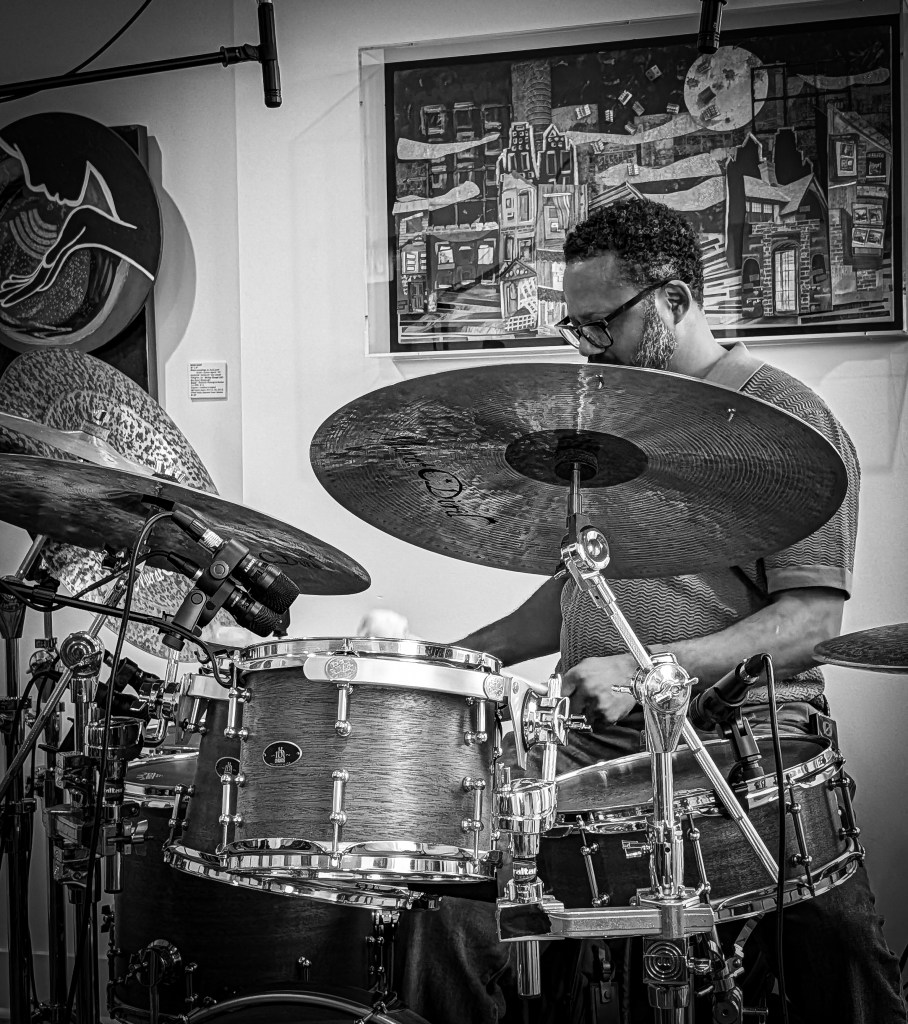
- Etienne Charles and Creole Soul (Wexner Center for the Arts) and Quintron and Ms. Pussycat with DANA (Cafe Bourbon Street), both 09/18/2025 – Two approaches to blending cultures and styles through a distinct lens of a life in art, both made exciting shows on this September night. Trumpeter/composer Etienne Charles led his phenomenal band through a selection of compositions drawing from jazz and funk traditions and his Trinidadian heritage to a rapturous crowd at the Wexner Center Performance space. A five minute drive away – we sadly missed Mutha Funk though I heard great things – Quintron and Ms. Pussycat celebrated their 30th anniversary as a rock-and-roll puppet show with homemade drum machines, greasy organ, and garage-rock hooks that’s had me in its hooks for decades and is still a show like nothing else and one I’ll never miss if I can help it.
- Kid Congo Powers with Cheater Slicks (Grog Shop, Cleveland, 09/20/2025) – I did a lot of thinking about memory this year – I often do, but at 45 it felt pronounced – and seeing the great Kid Congo, a throughline of so much music I loved play a set bursting with memories of friends and colleagues he’d lost, including “The Boy Had It All,” “Sean DeLear,” “La araña,” “He Walked In,” and songs he’d played with bands many of whose members have slo passed on like The Cramps and The Gun Club, vibrated with those feelings and reminded me that you can carry those people with you in a jubilant way without diminishing how much it hurts. In addition, Cheater Slicks (longtime friends and mutual admirers of Powers) who have been on a streak the last two years, played one of the best sets I’ve seen them do in 30 years of seeing them semi-regularly.
- Lorette Velvette with Deerfrance (Bar DKDC, Memphis, 09/26/2025) – The best musical side quest we’ve had in over a decade of going to Memphis with Gonerfest as the main course: Panther Burns legend Lorette Velvette on a double-bill with linchpin of John Cale’s Sabotage era Deerfrance in the intimate confines of Bar DKDC. Killing new songs from both artists, excellent bands including members of the Reigning Sound, Panther Burns, and the Memphis Symphony, and a gorgeous clinic of song.
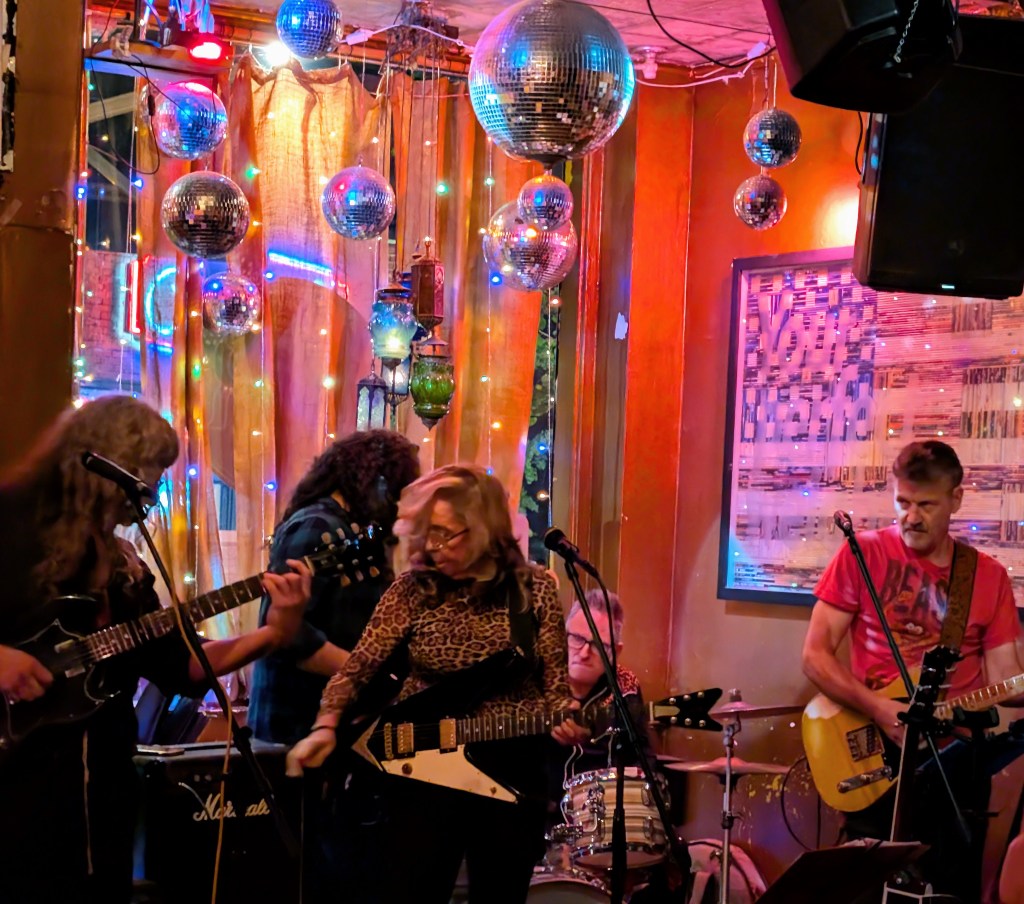
- Talisha Holmes and the Stardust (Dick’s Den, 10/03/2025) – I’ve been a fan of Talisha Holmes’ voice since High School and her singing and repertoire for almost 20 years, but the first show with the band she dubbed Stardust felt like a new chapter opening with ecstatic/spiritual jazz and folk textures into the thorny, dense R&B she does better than anyone else in town. It was an eye opening evening that got me extremely excited to see what’s coming next.
- DANA with Messrs and DJ Adam Scoppa (Ace of Cups, 10/17/2025) – As seen in my records of the year, I thought DANA’s Clean Living was a triumph, and their constant touring schedule honed their most nuanced and powerful set of songs into a ferocious live set. Here, along with a rare reunion set from Columbus’ deconstructed hardcore heroes Messrs (including drummer Mat Bisaro playing like a monster while also going through a grueling round of chemo) and the sweet sounds of Adam Scopp’s Heatwave dance night made one of the most satisfying reminders of what I love about Columbus.
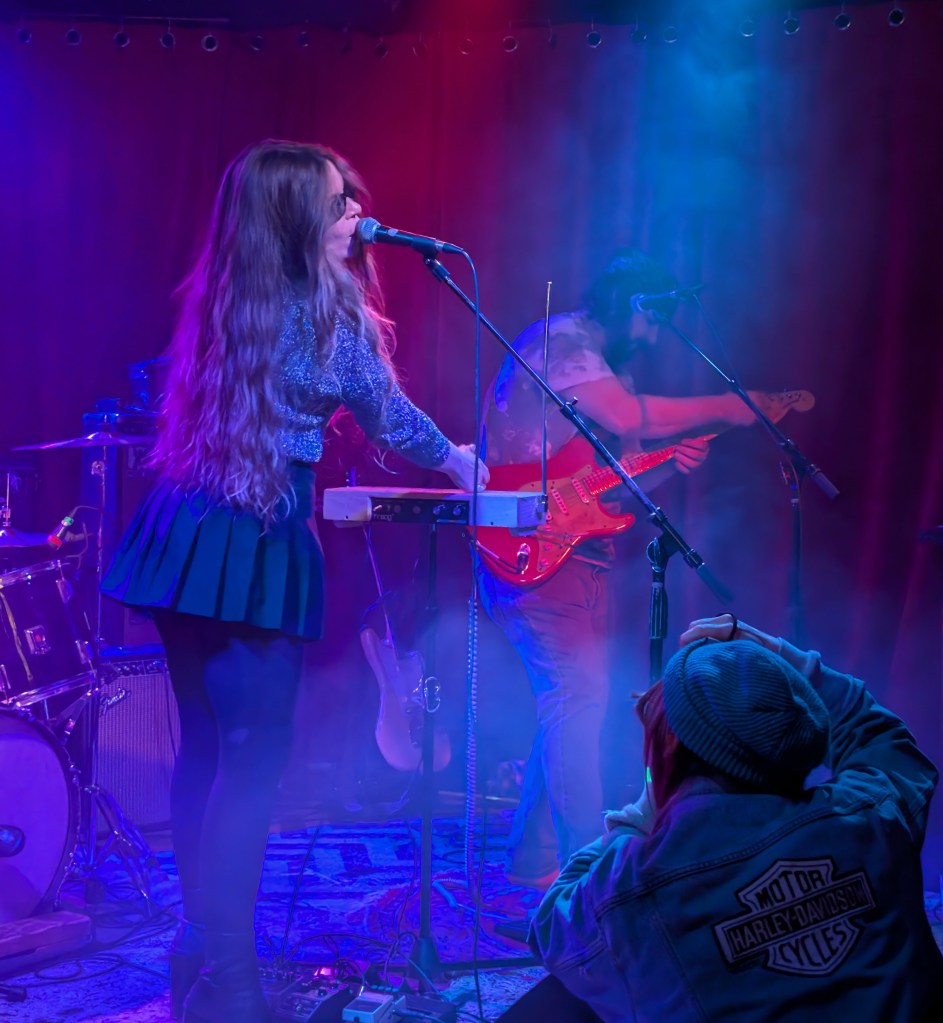
- Robbie Fulks (Natalie’s Grandview, 10/18/2025) – Robbie Fulks is another artist who is no stranger to anyone who’s read this or talked to me, but what made this appearance at Natalie’s special to me was a return to the four-piece rock band format that made me fall hard in the first place, with drummer Gerald Dowd, bassist KC McDonough, and guitarist Robbie Gjersoe doing a setlist that returned to the first three records – and the excellent new one, Now Then – with one highlight after another.
- Micah Schnabel and Vanessa Jean Speckman (Rumba Cafe, 10/23/2025) – A valedictory show for two artists who have done so much for Columbus in their performance home, Rumba, and a set that made my heart almost burst out of my chest.
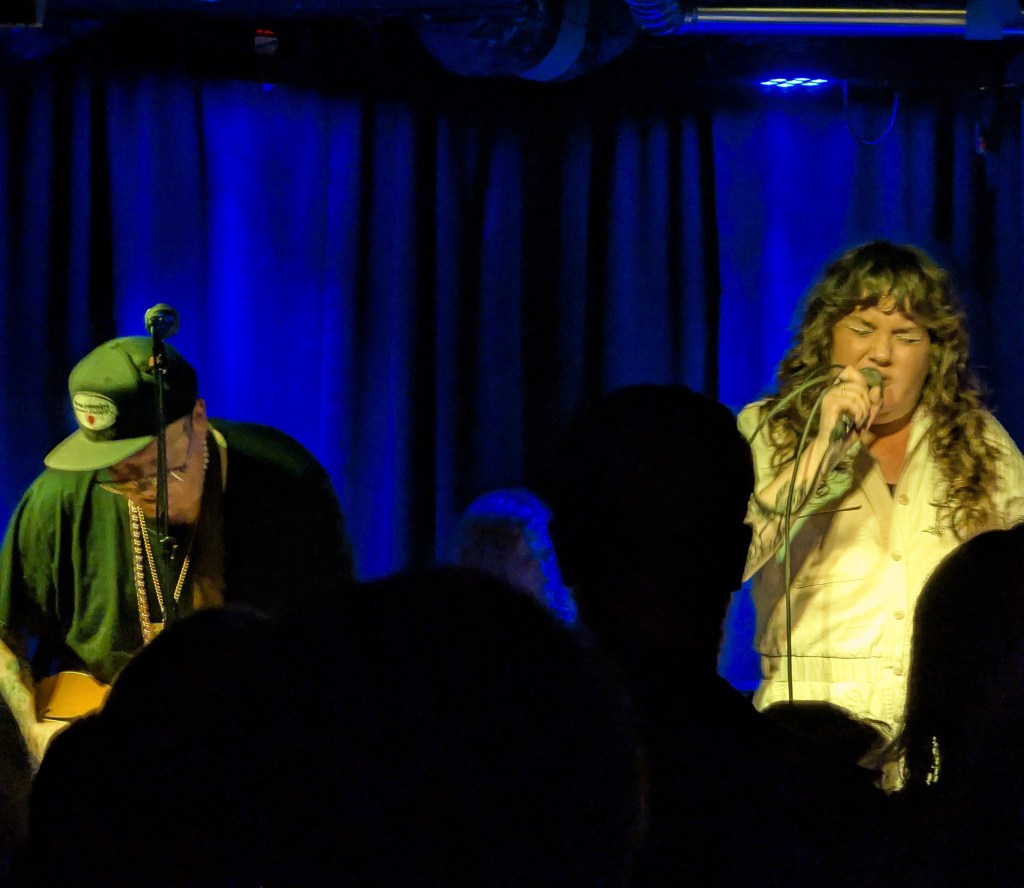
- Worthington Chamber Orchestra, Frontiers of Sound (Worthington United Methodist Church, 11/07/2025) – The Worthington Chamber Orchestra has a great series, and they continued to cement their place in the creative firmament of Columbus with commissioning the first violin concerto from Columbus native (now based in New York) Aaron Quinn, played by Devin Copfer (WCO concertmaster, Chamber Brews co-founder, Devi and Liz, Urban Art Ensemble) and the orchestra. The piece planted its flag in a truly American continuum, textures that felt like Ives and Copland, cascading harmonies that recalled some of the sticky synth layers of vintage Detroit techno, and a soulful bluesiness in the central violin line that still had all rigor you’d want to see from classical music.
- Durand Jones and the Indications with Psycodelics (Newport Music Hall, 11/09/2025) – The smooth soul of Durand Jones had a packed crowd at the Newport eating out of their palms with a sweaty, vibrant show that summed up what so many of us love about the genre while also serving as the entry point for so many younger people. Psycodelics did a muscular, fiery take on vintage sounds like EWF, Sly, and P-Funk that reminded me that music has a long future ahead of it.

- Minibeast (Cafe Bourbon Street, 11/14/2025) – Peter Prescott’s Minibeast knocked me completely over, with sparking noise and 10,000-league-deep grooves. Also a reminder of how good Bobo sounds these days. Every nuance of that powerful, multifaceted sound washed over everyone in the room.
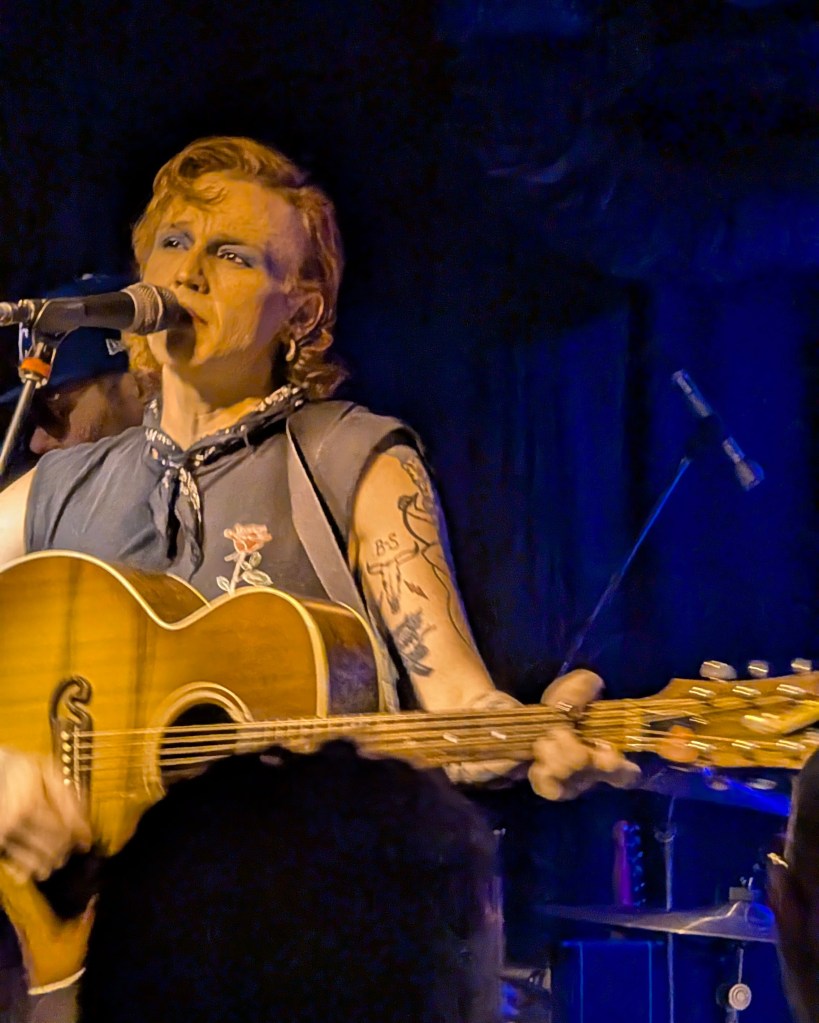
Top 20 Festival Sets
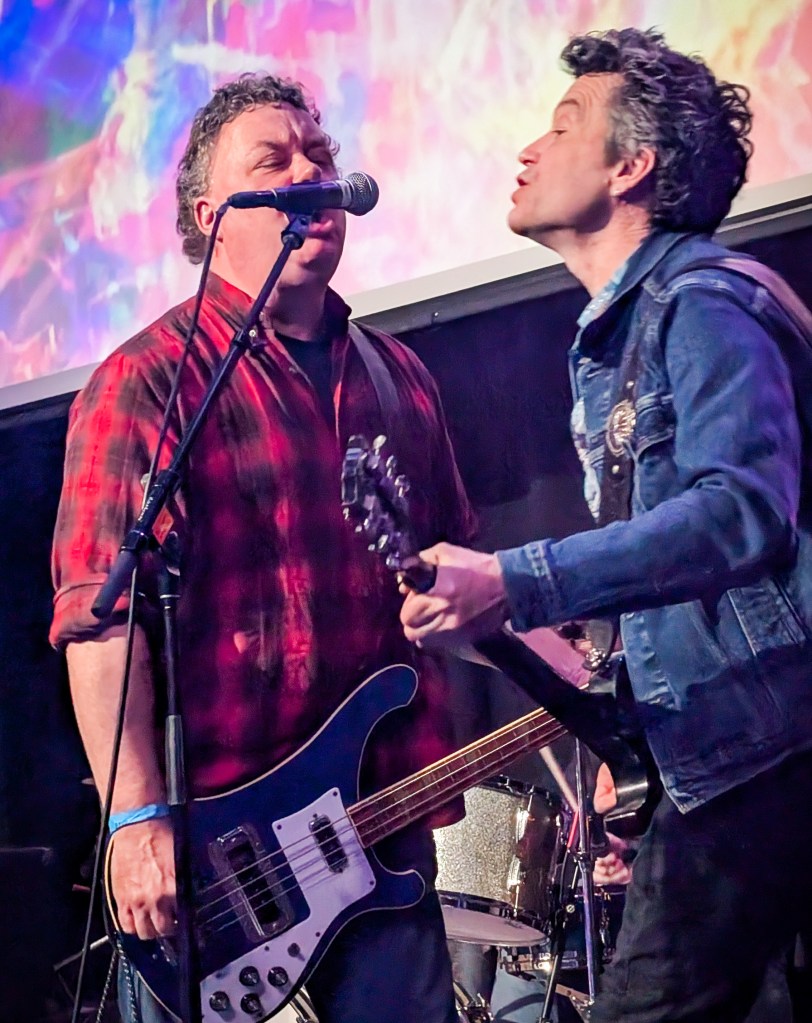
- Beachland’s 25th Anniversary (Beachland Ballroom and Tavern, Cleveland)
- Mourning [A] BLKStar
- Pull Chains
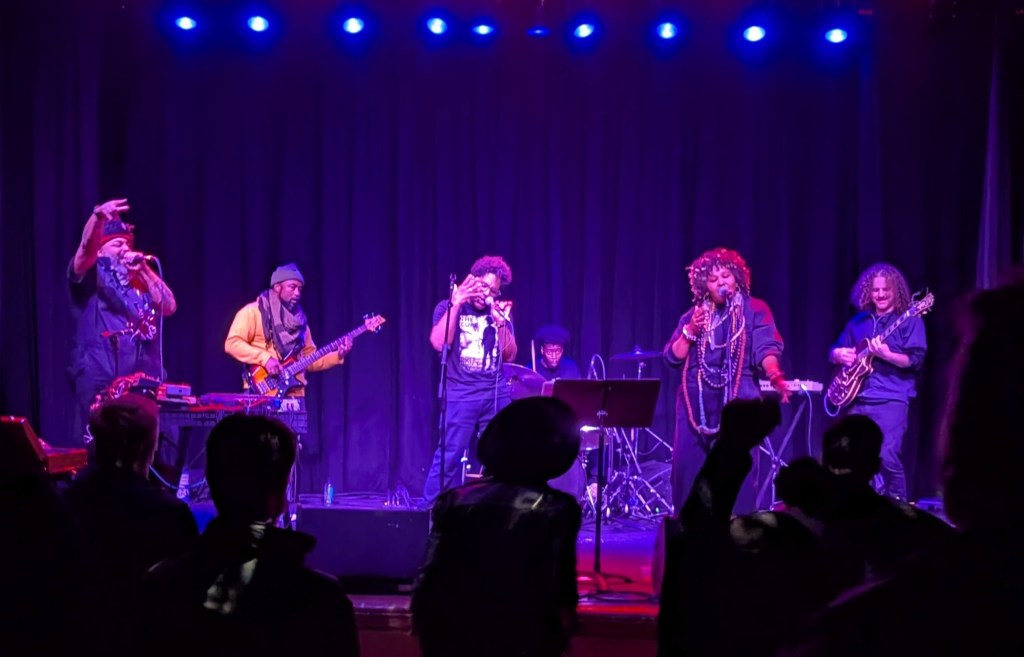
- Lost Weekend Records’ 22nd Anniversary (Natalie’s Grandview)
- Ugly Stick
- Thomas Jefferson Slave Apartments Featuring Mickey Mocnik

- Big Ears Festival (Various Venues, Knoxville)
- Kate Soper and Wet Ink Ensemble, Ipsa Dixit (Bijou Theatre)
- Joy Guidry (The Point)
- Tyshawn Sorey and DACAMERA, Monochromatic Light (Afterlife) (St. John’s)
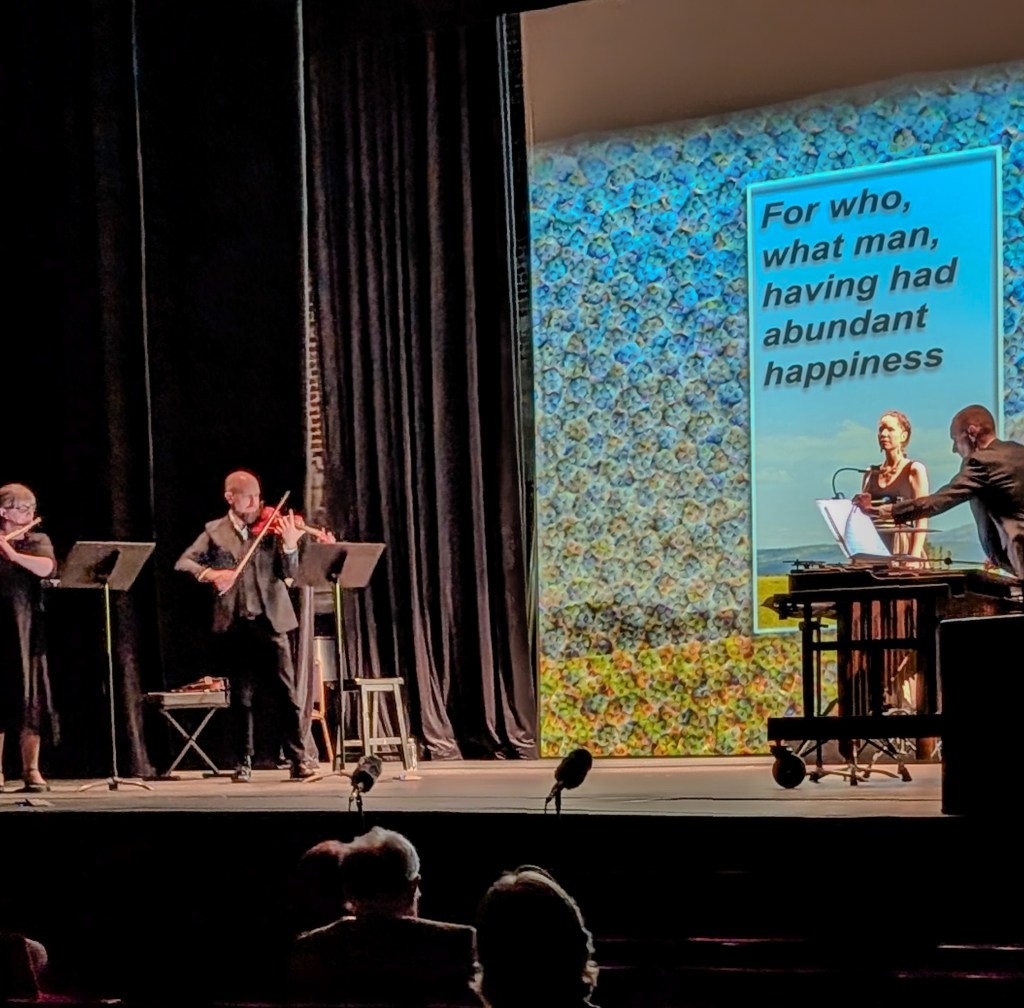
- Lee Bains III and Lonnie Holley (Barley’s)
- King Britt/Tyshawn Sorey/Meshell Ndegeocello/Melz (Jackson Terminal)
- SML (The Standard)
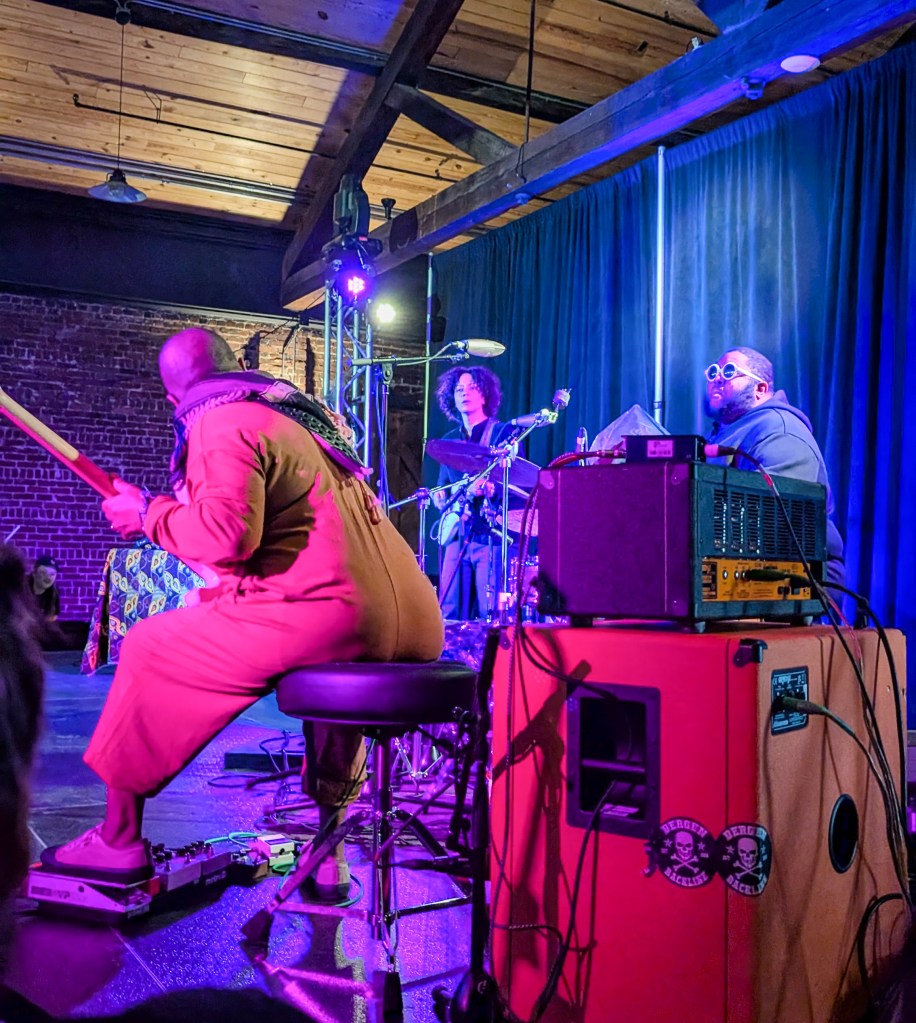
- Future Salad Days Opening (Blockfort Parking Lot)
- Juanita and Juan
- Clickbait
- Cheater Slicks
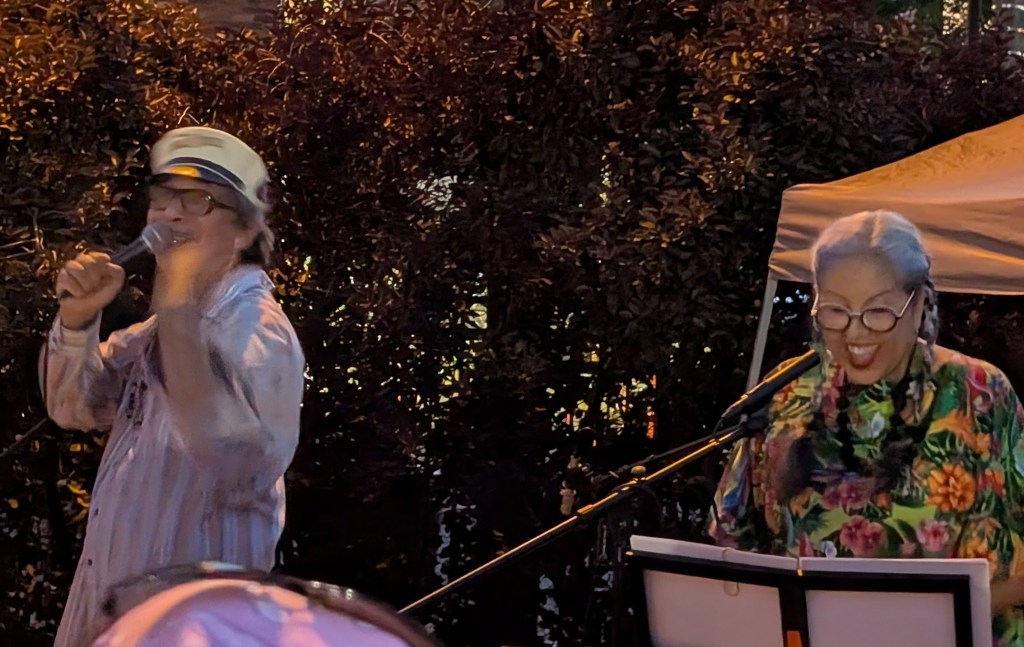
- Jazz and Ribs Fest
- Ron Holmes’ Eclecticism
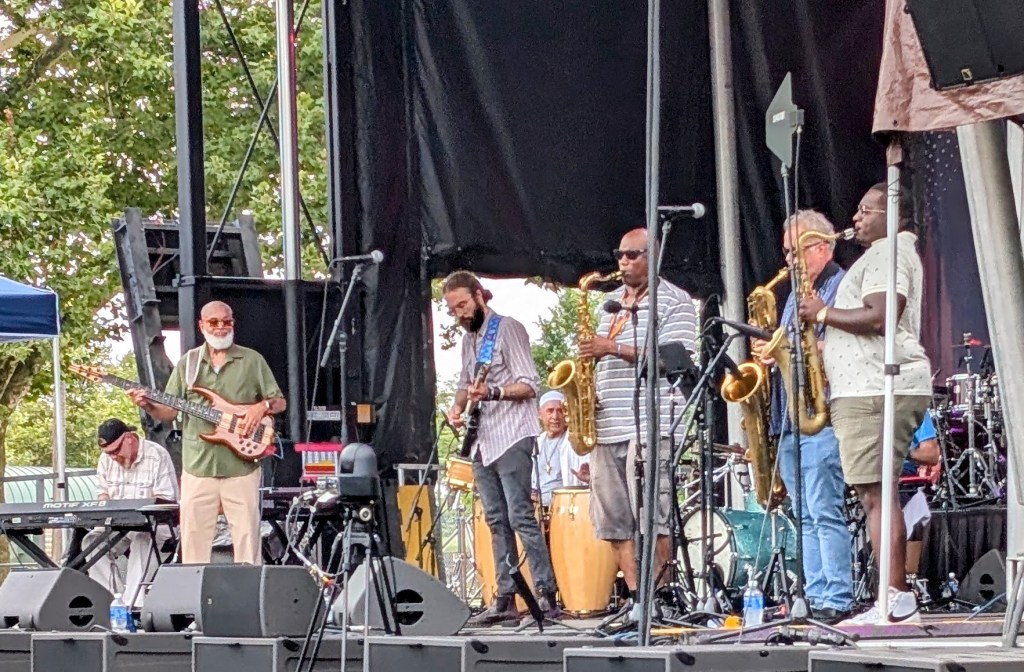
- Gonerfest (Wiseacre Brewing, Memphis)
- Pylon Reenactment Society
- Lightning Bolt
- Lothario
- Cheap Fix
- Des Demonas
- TINA!!!
